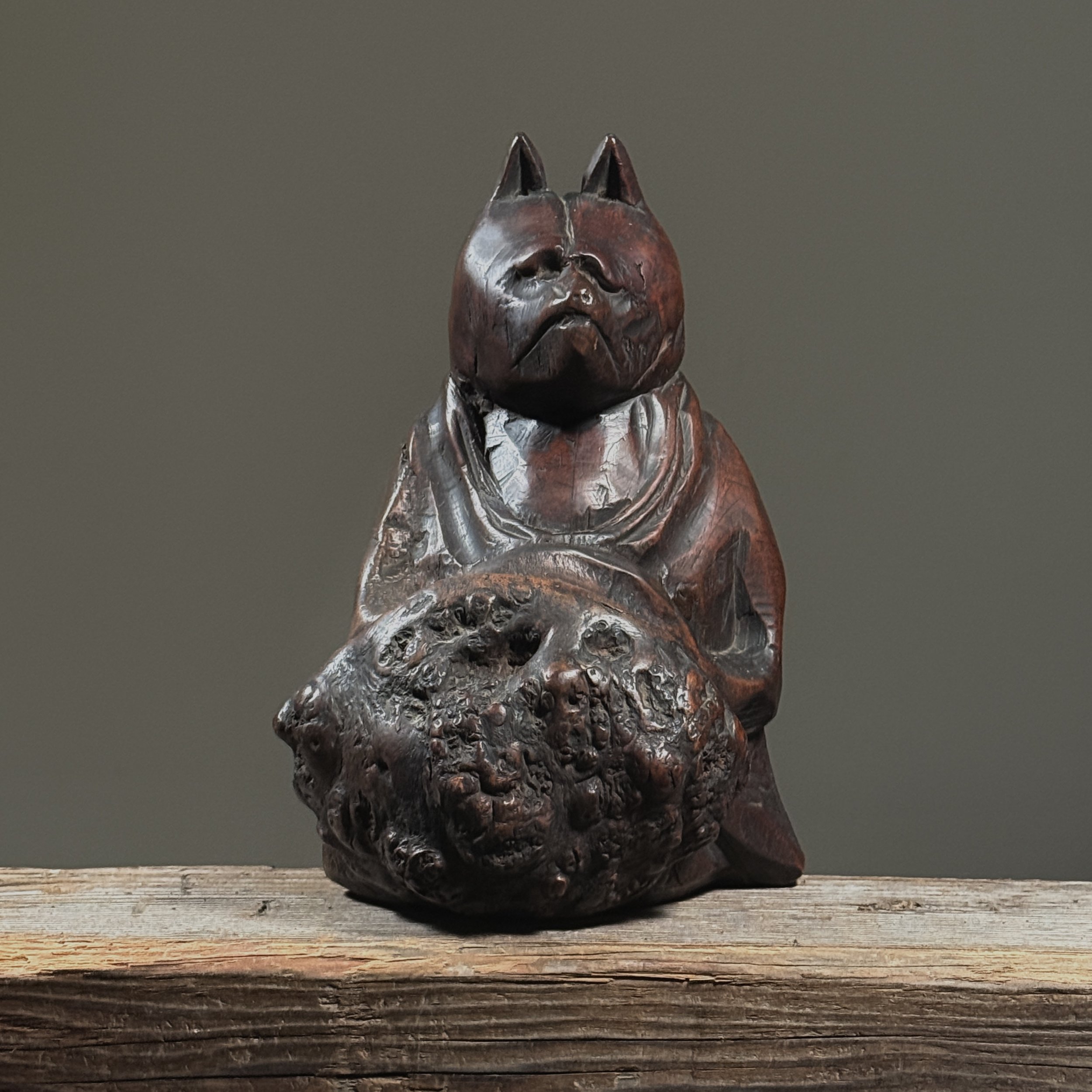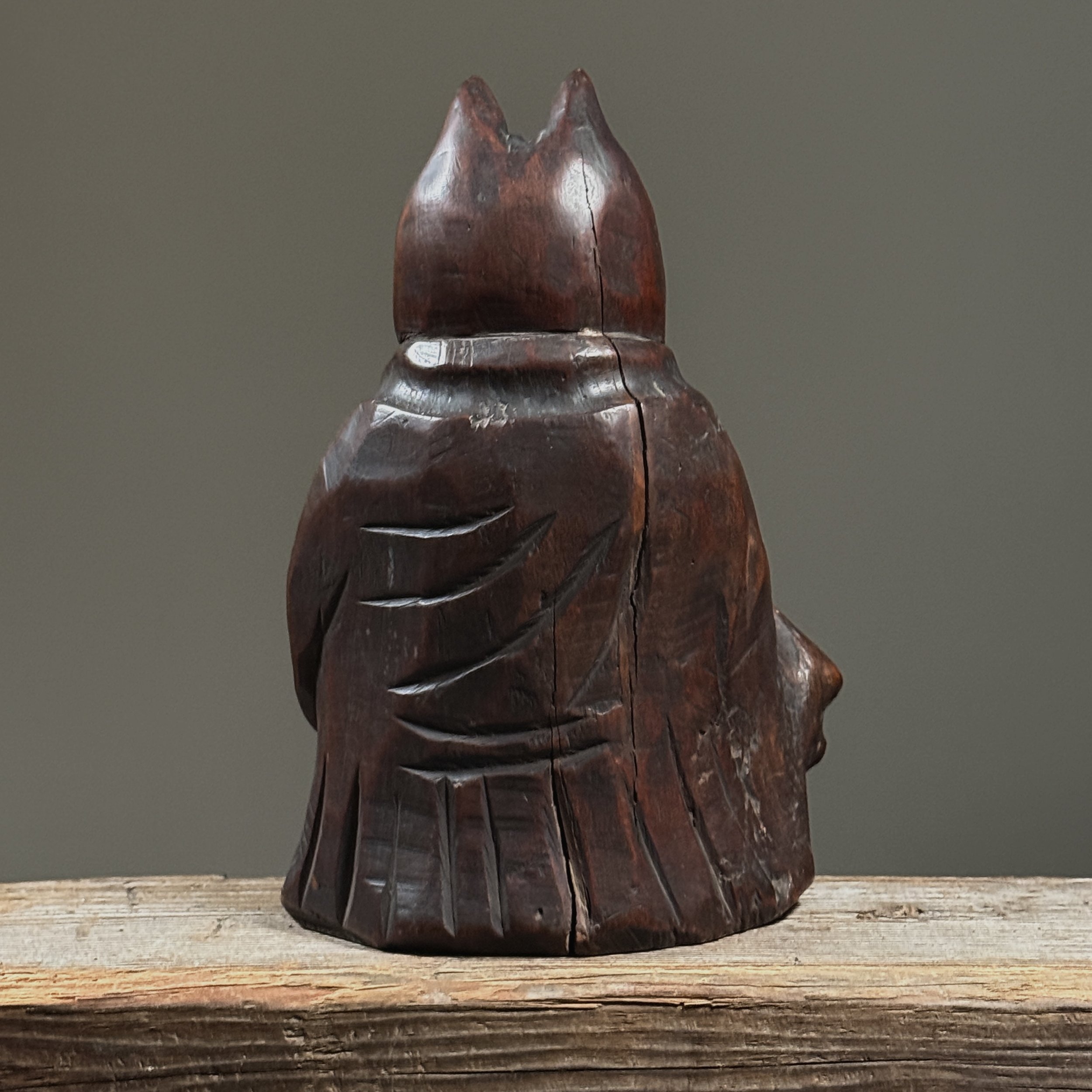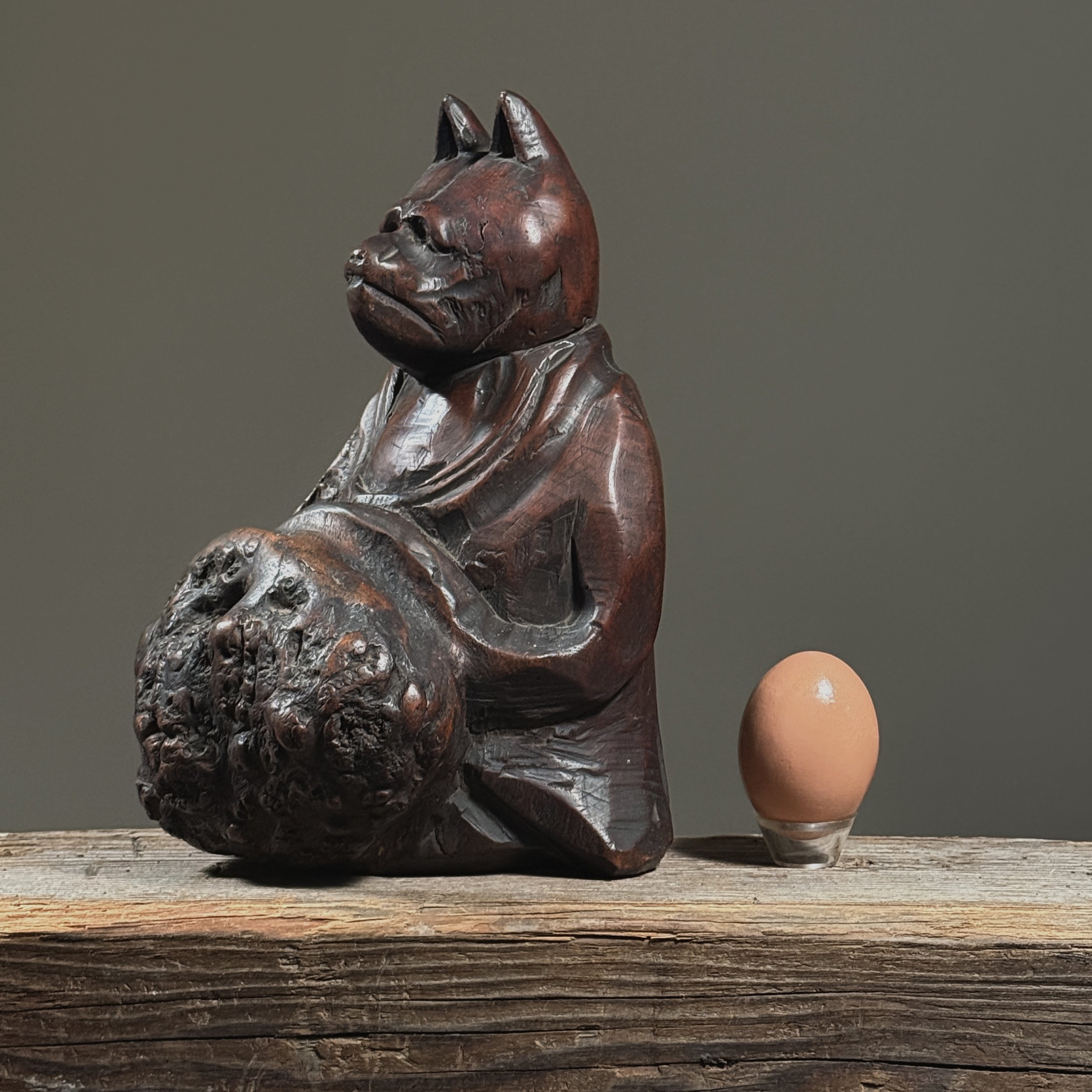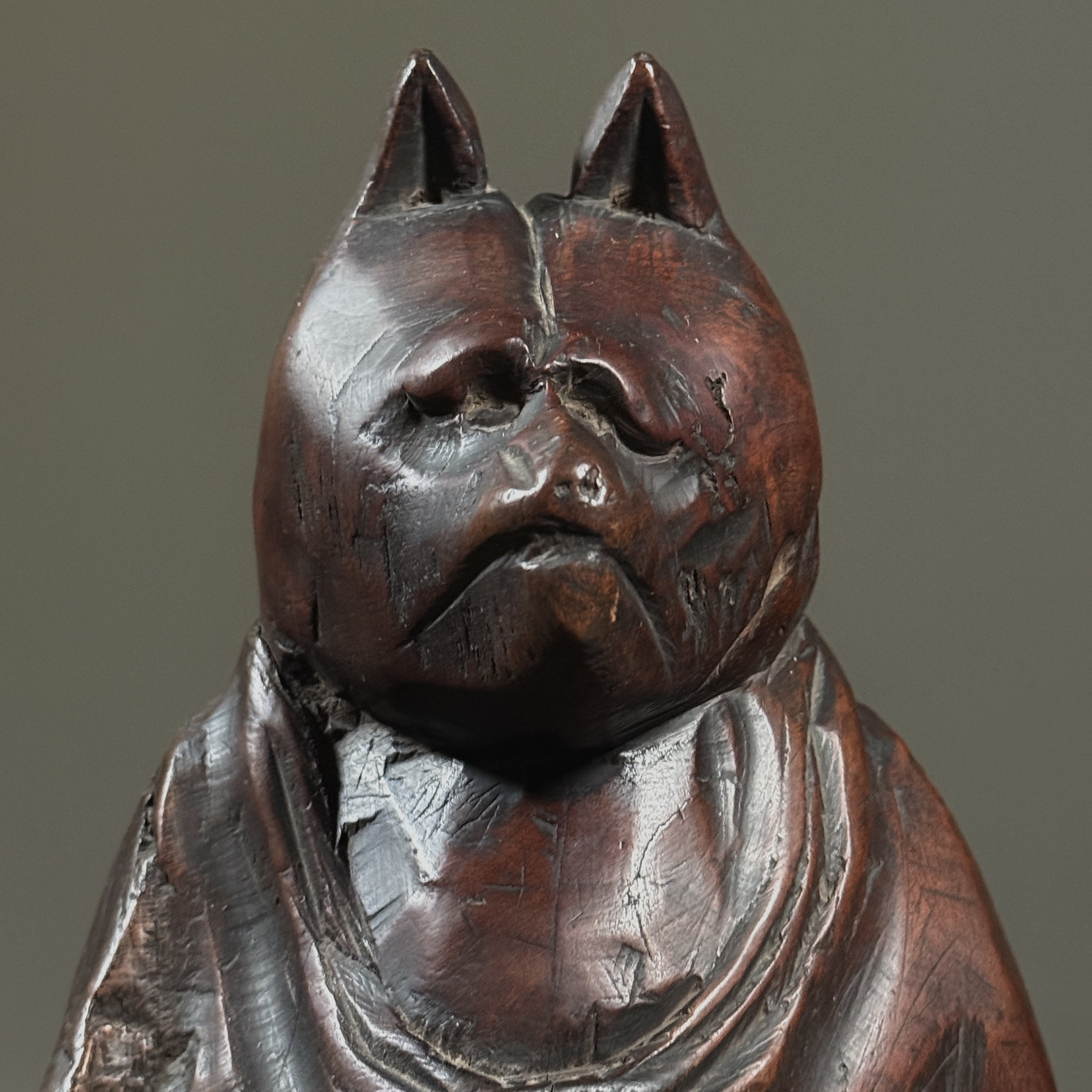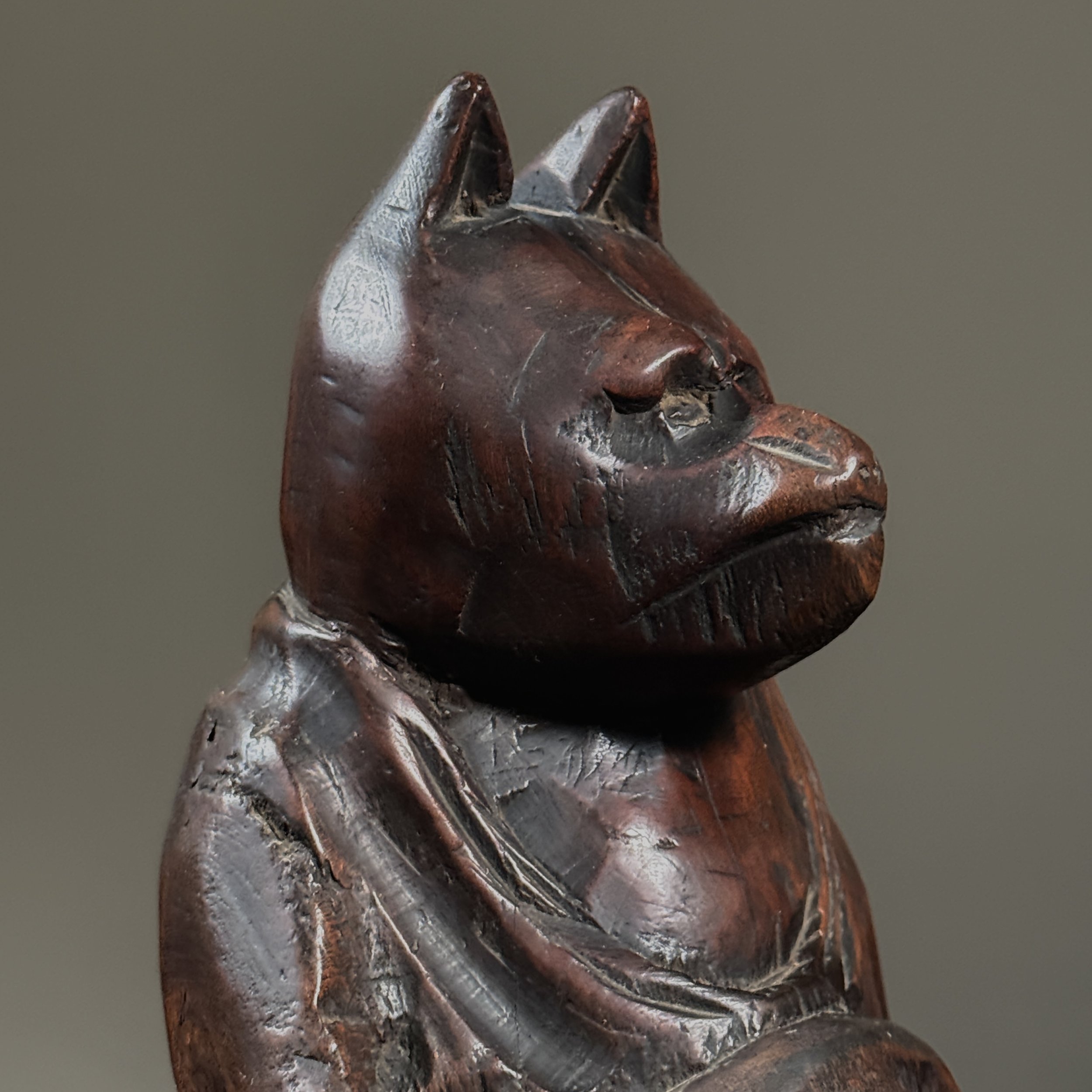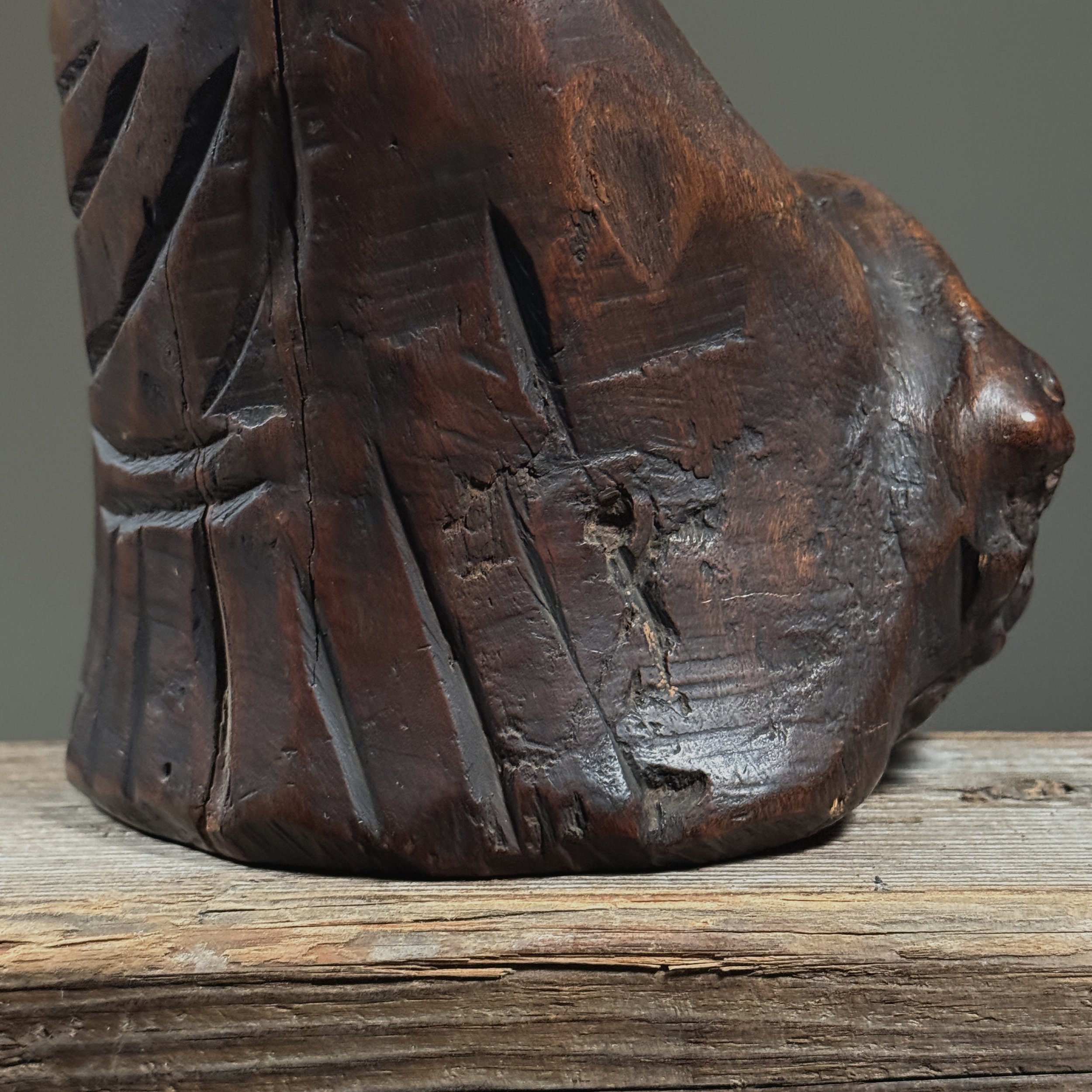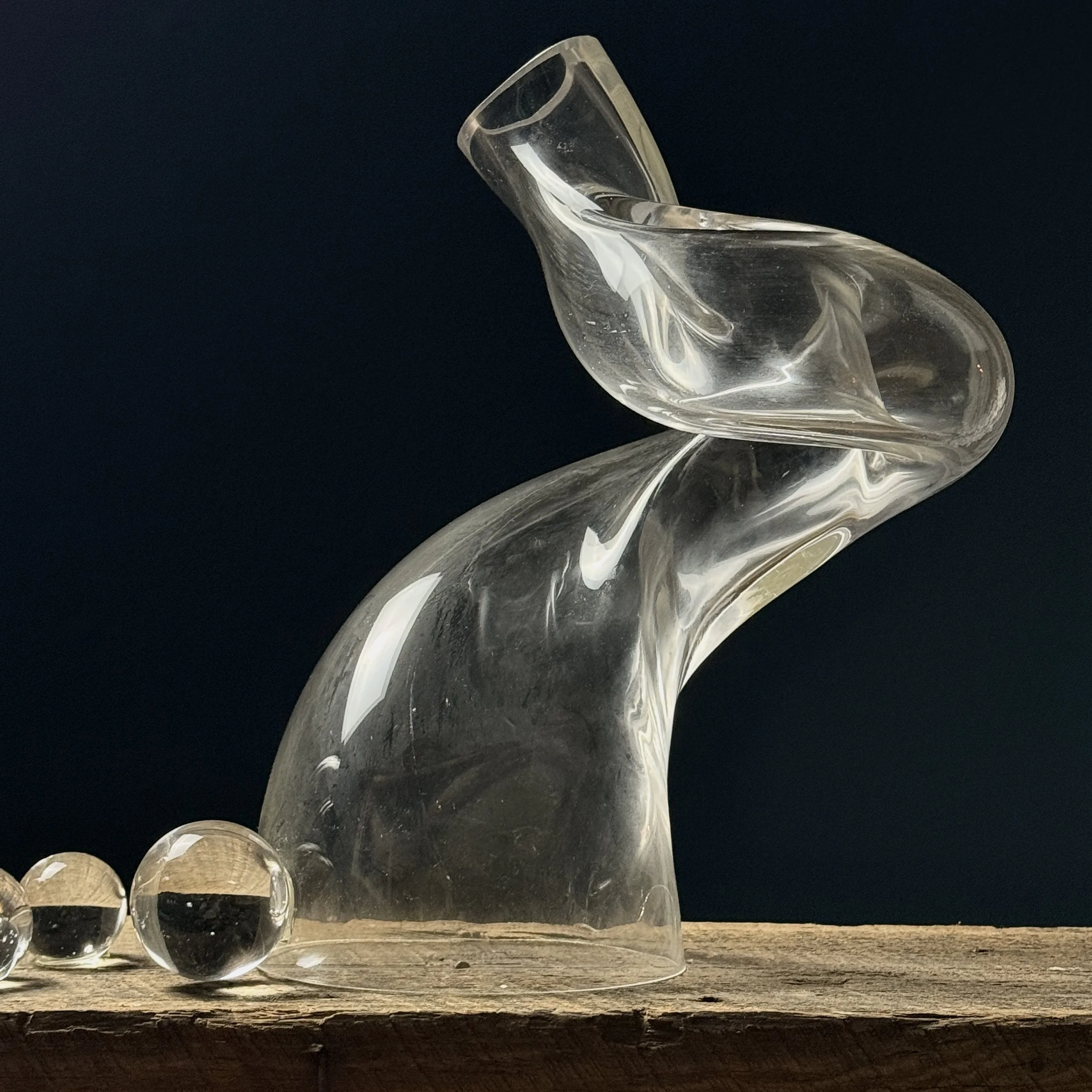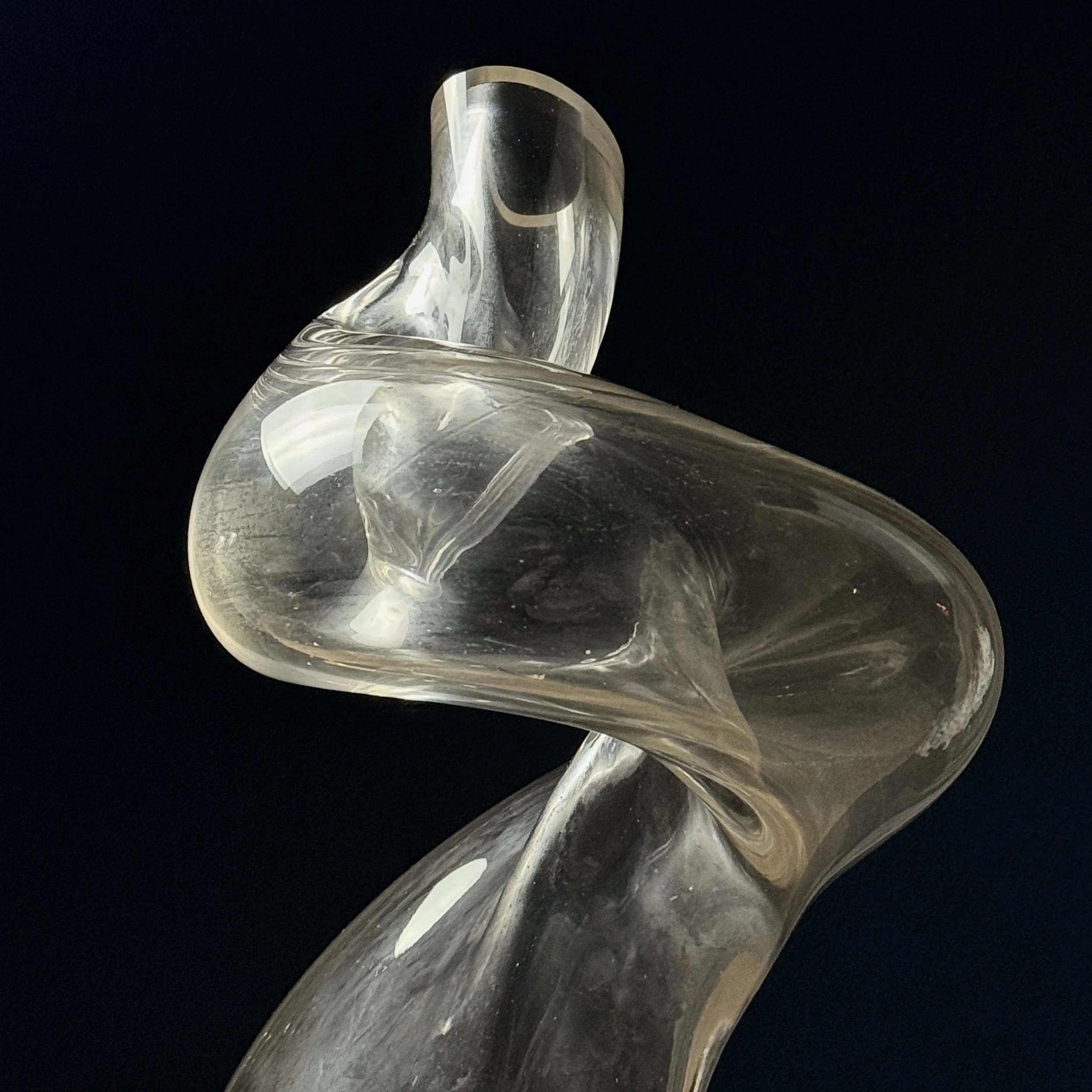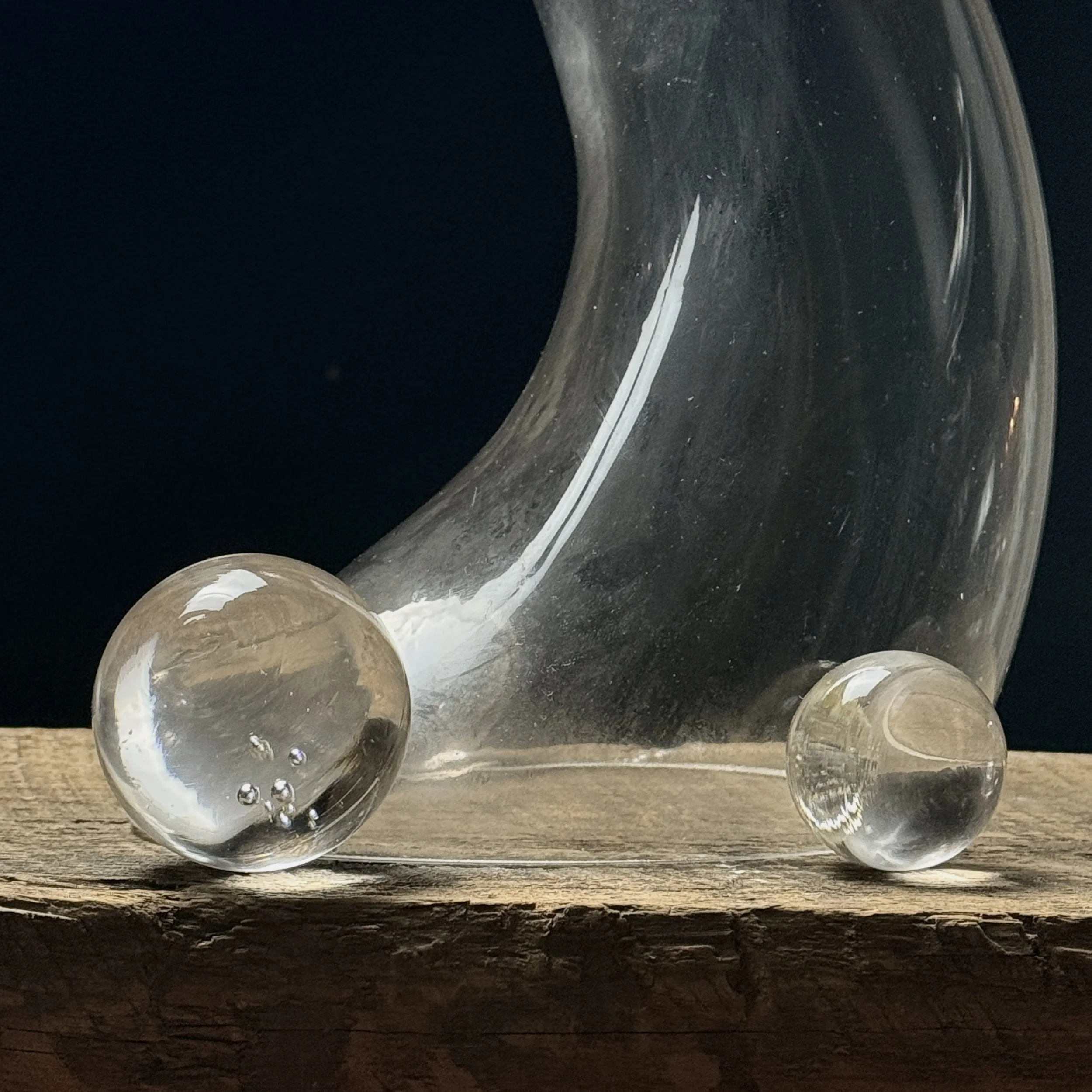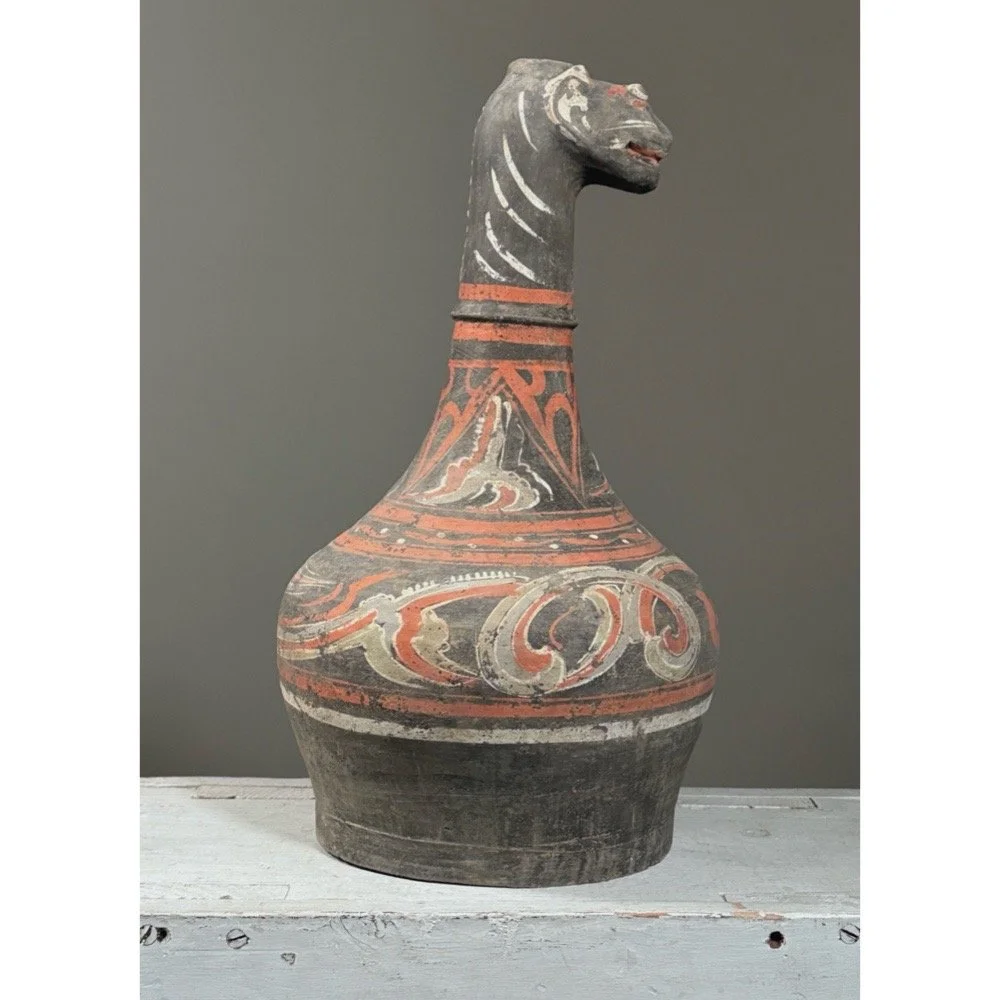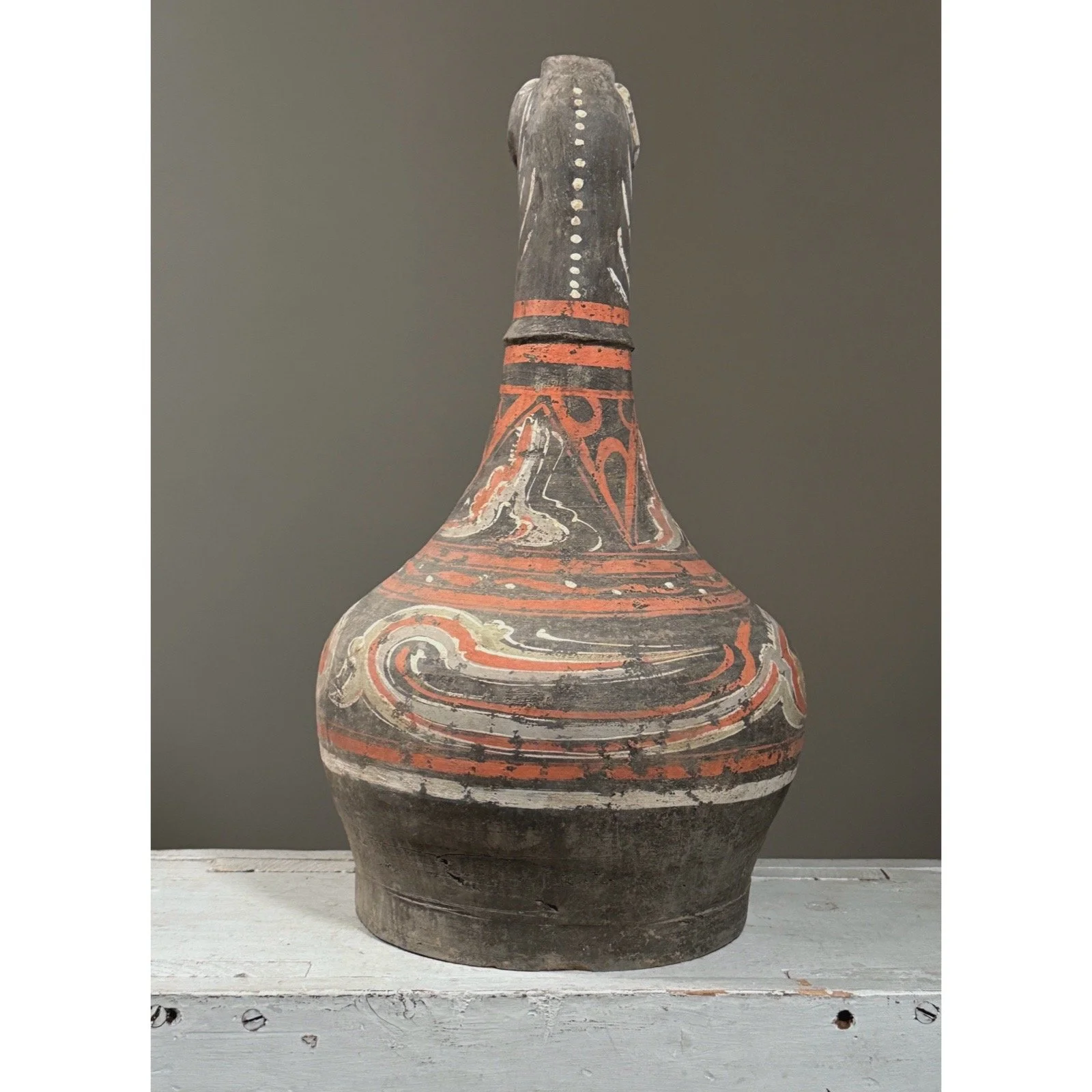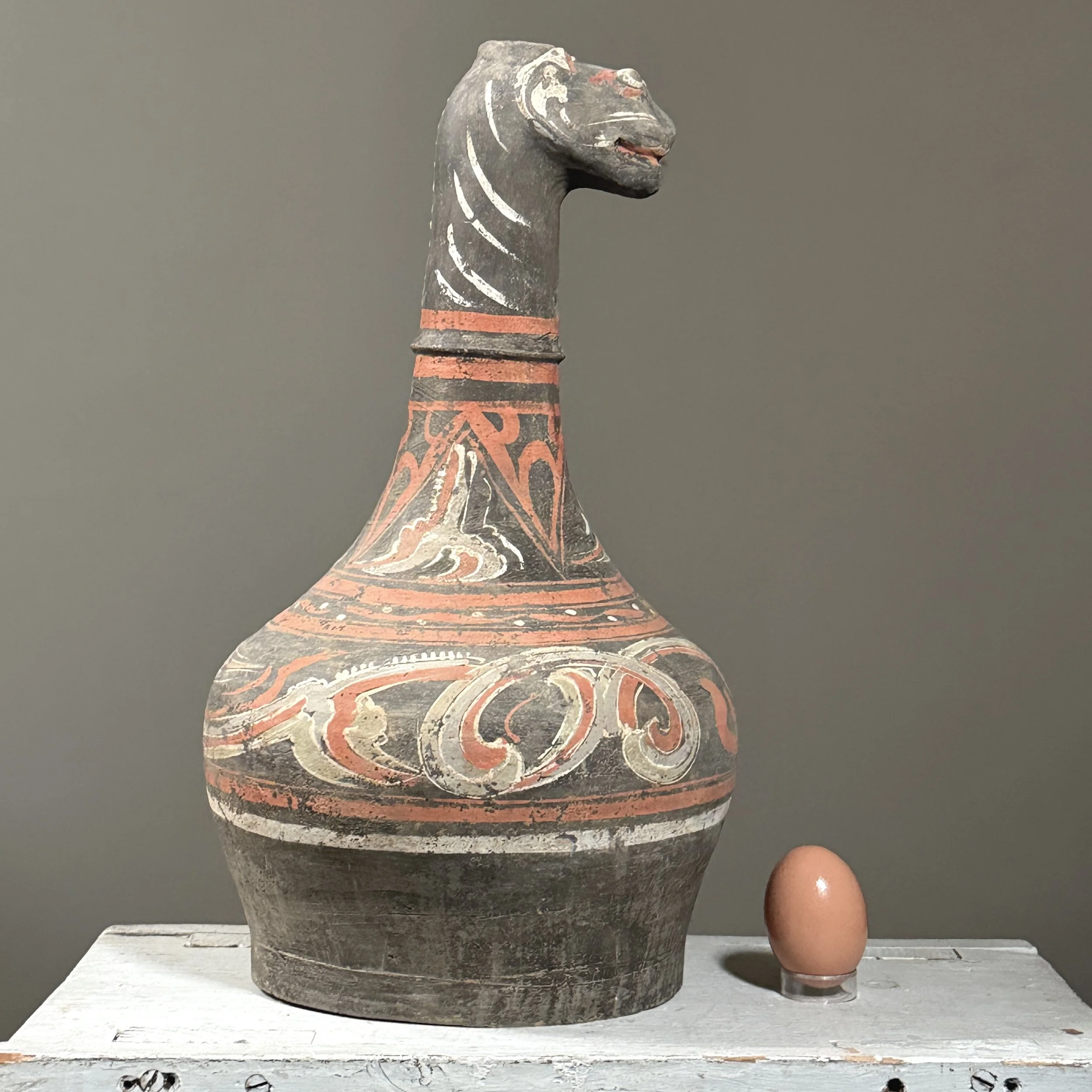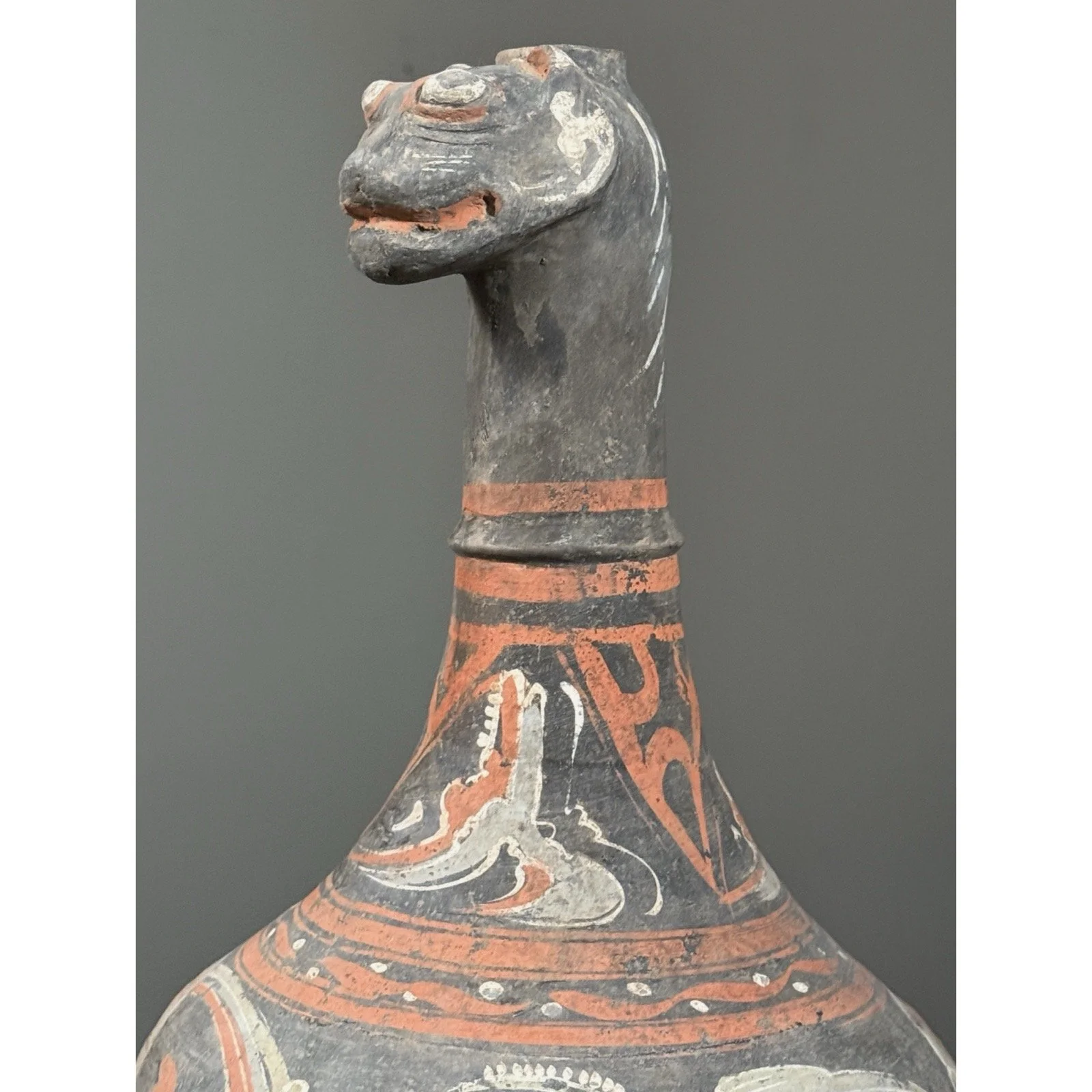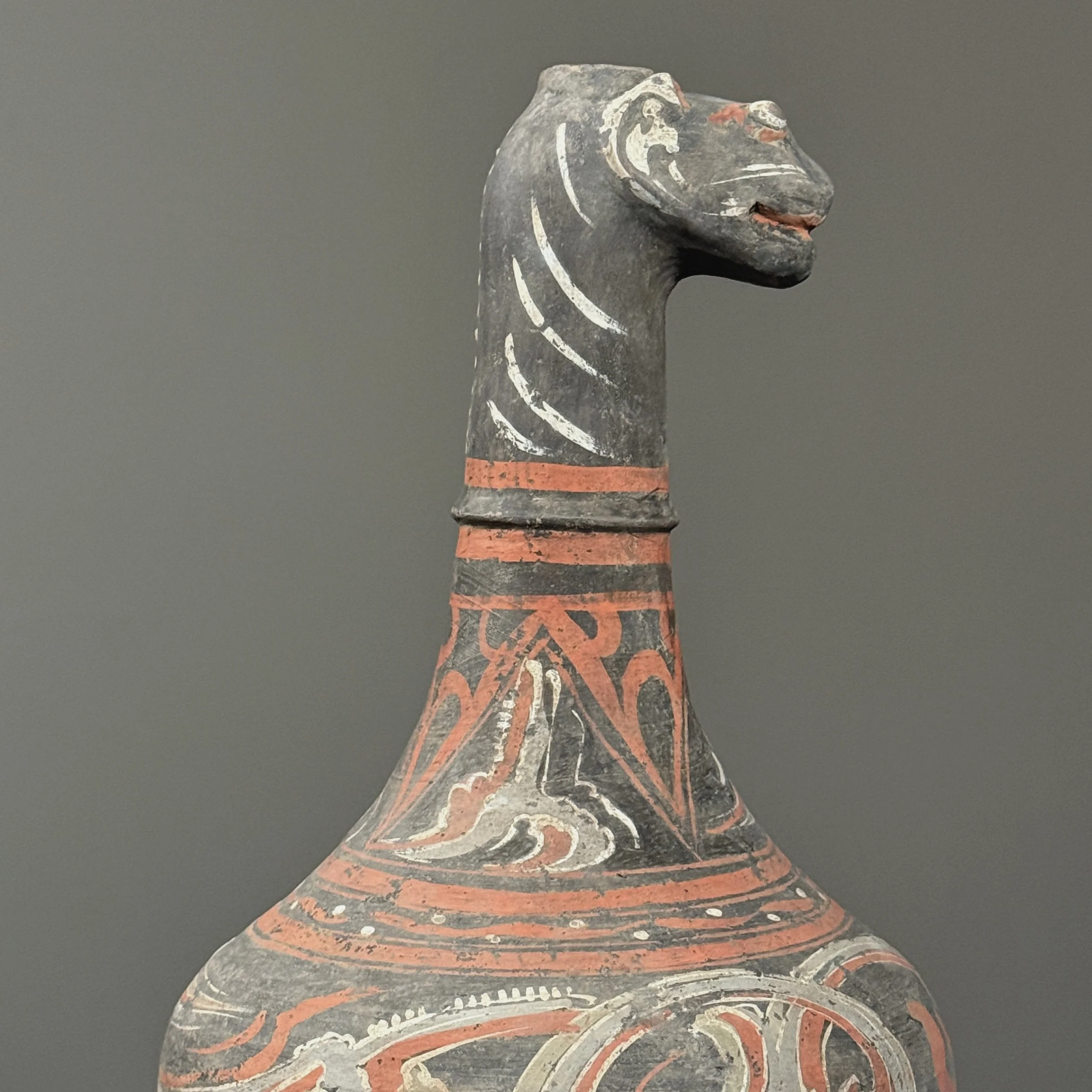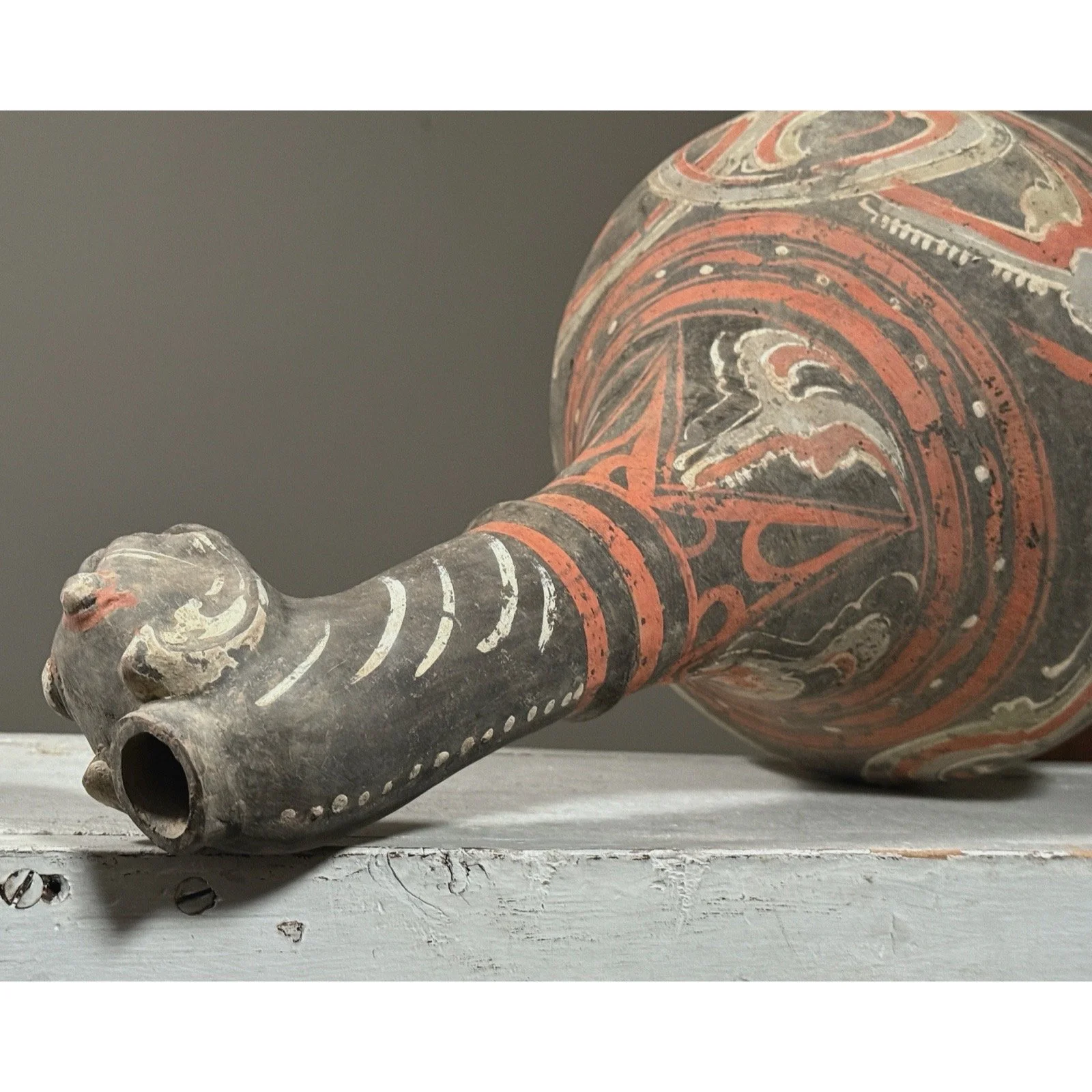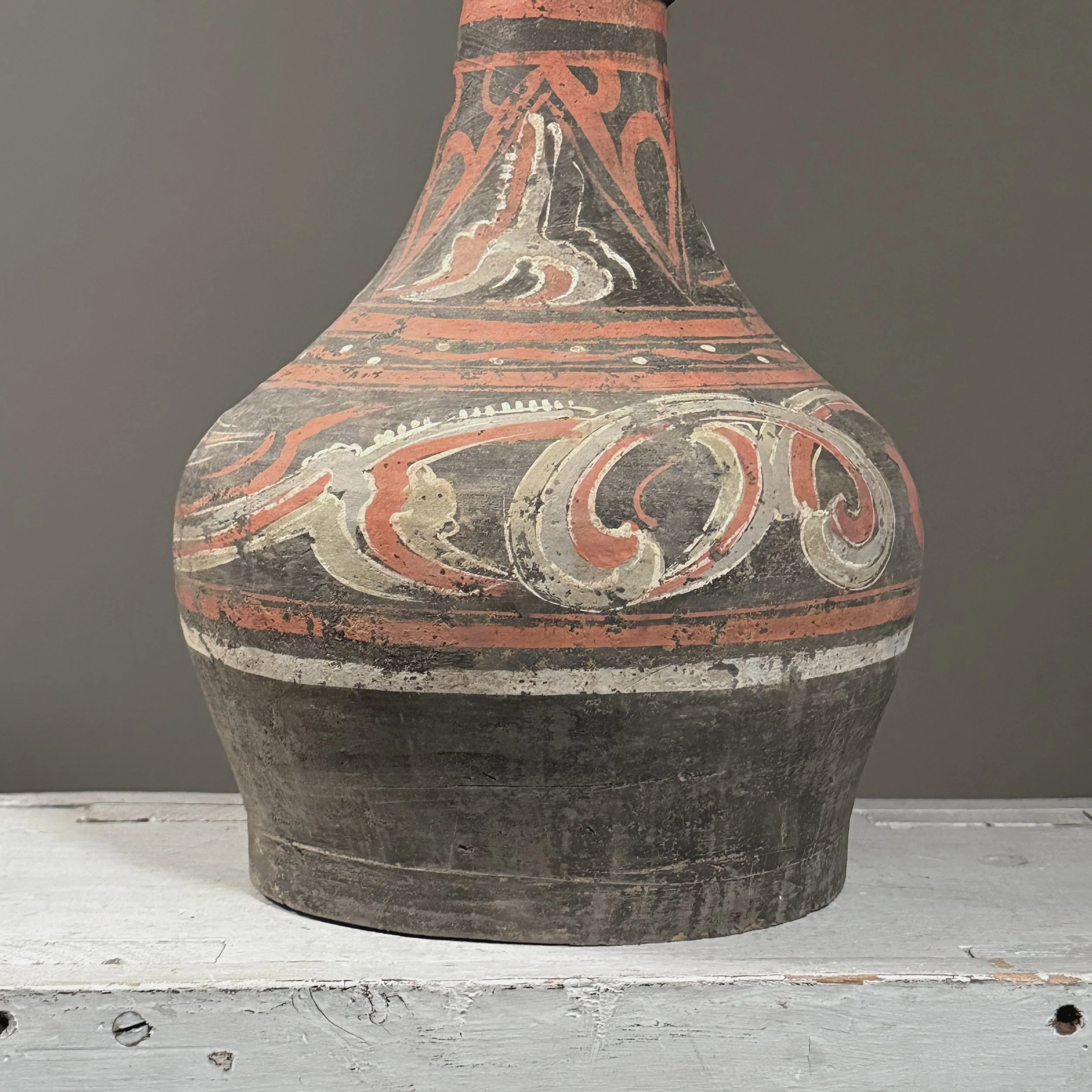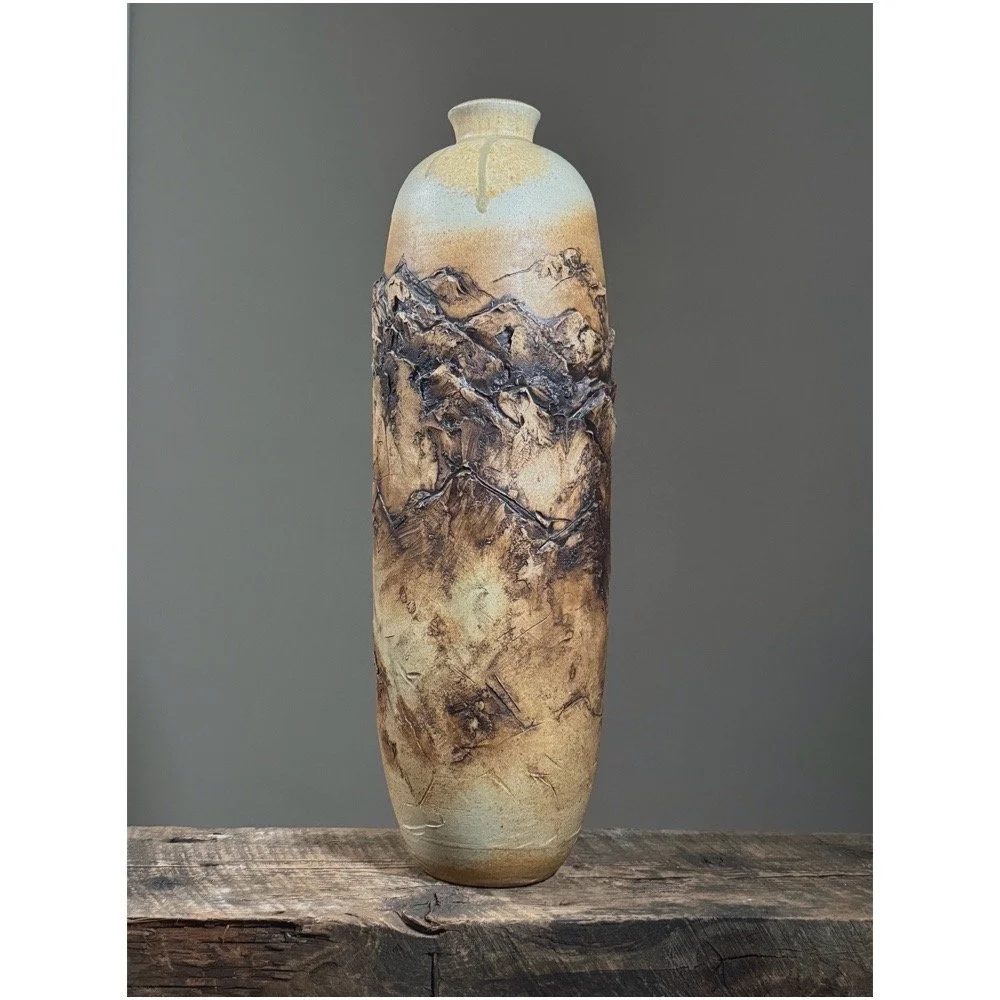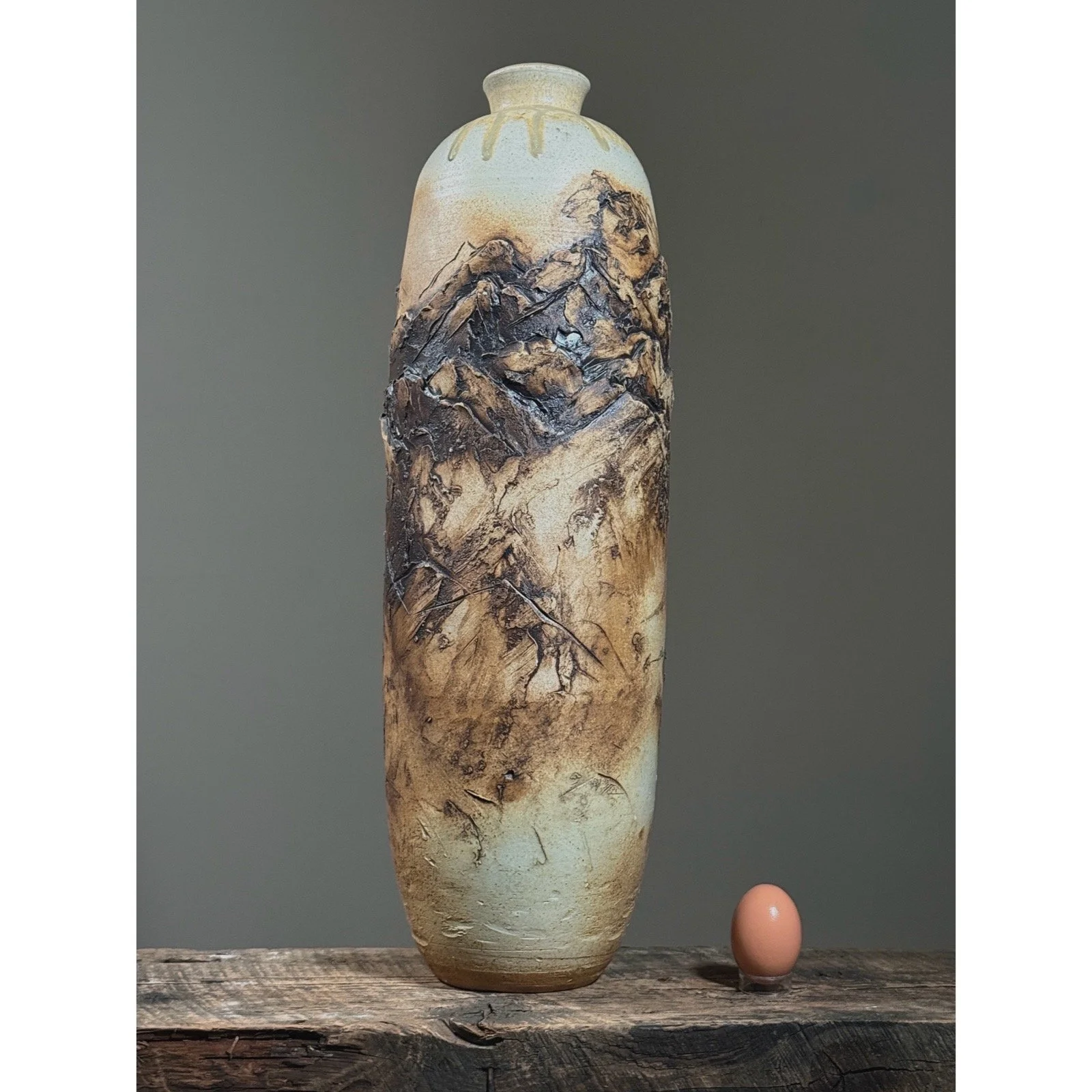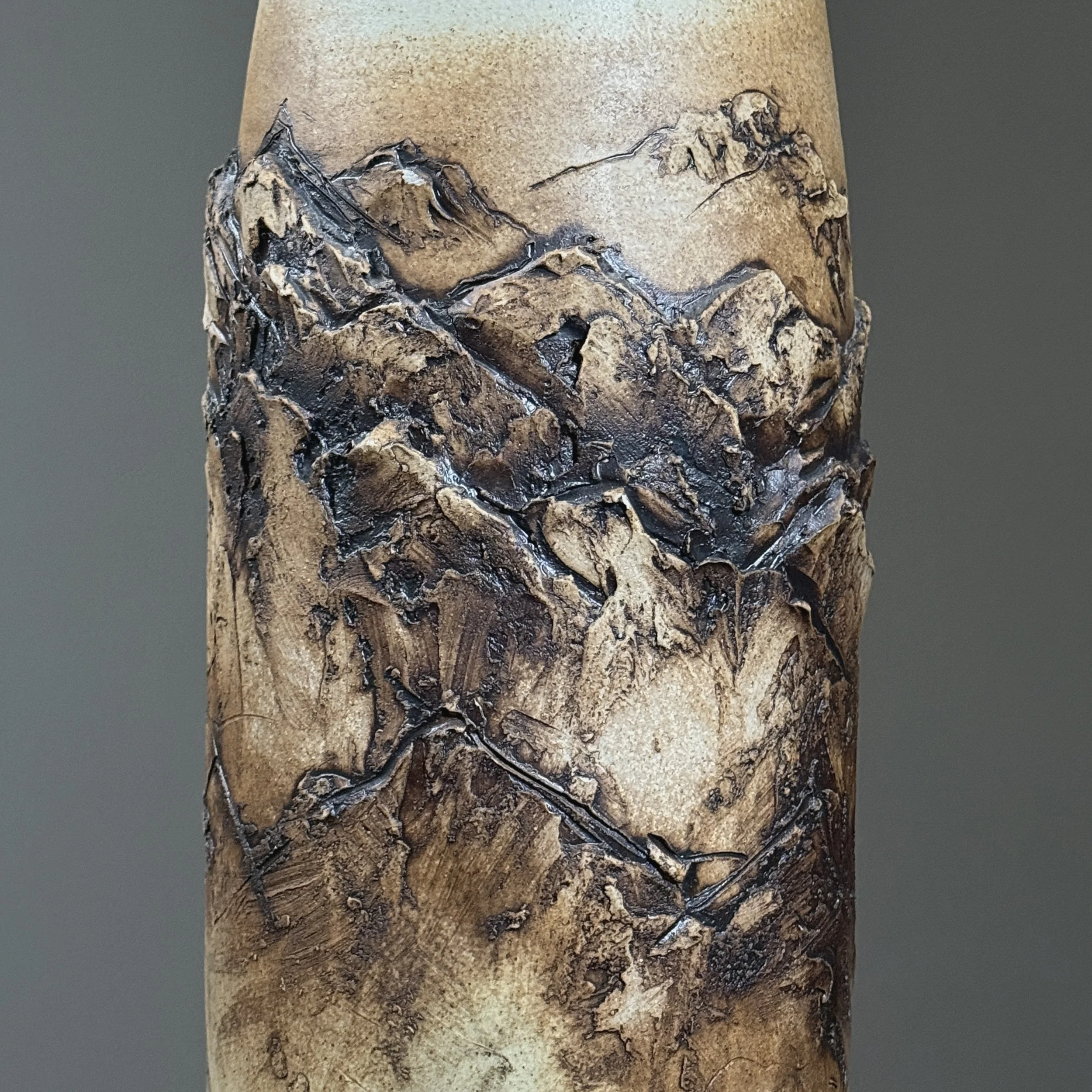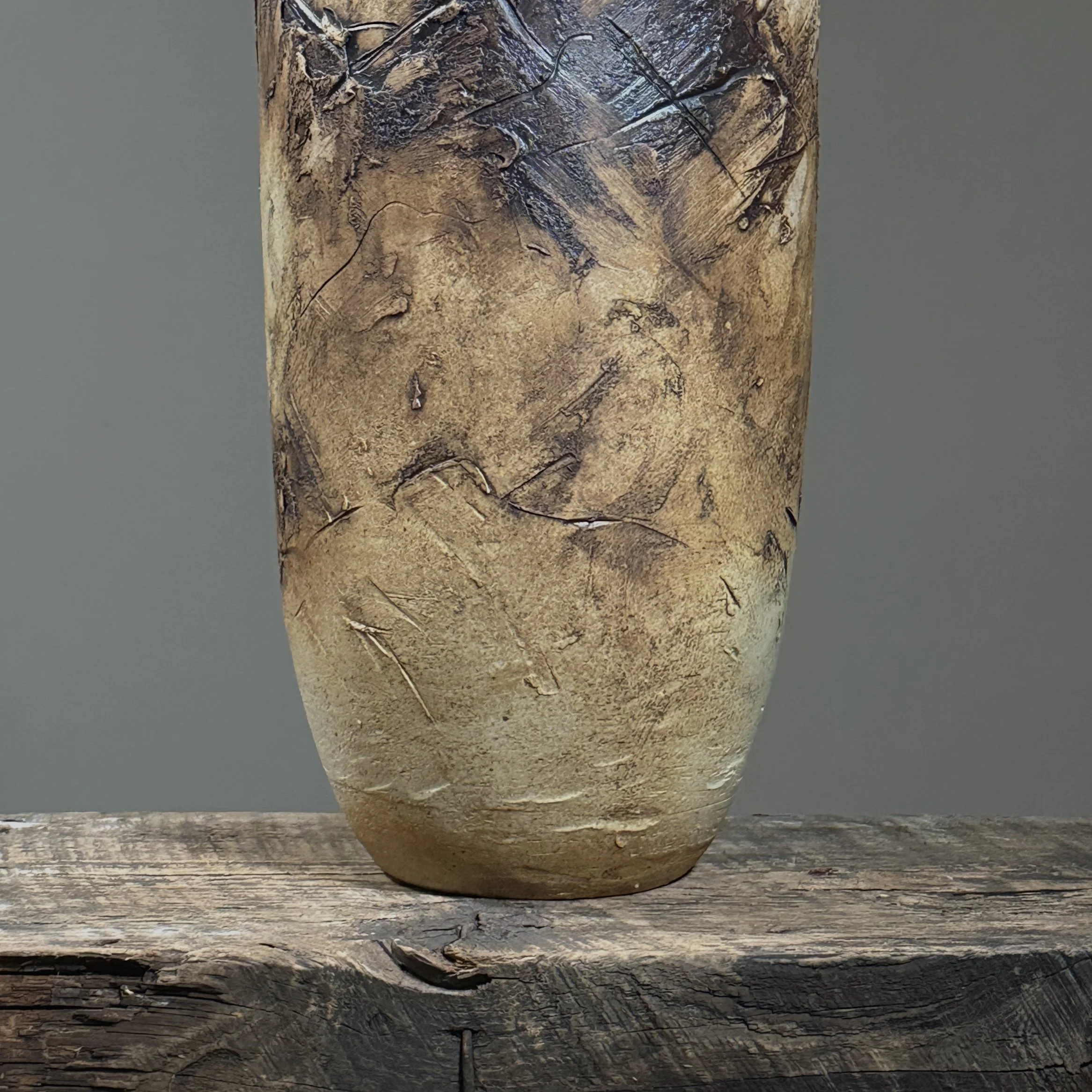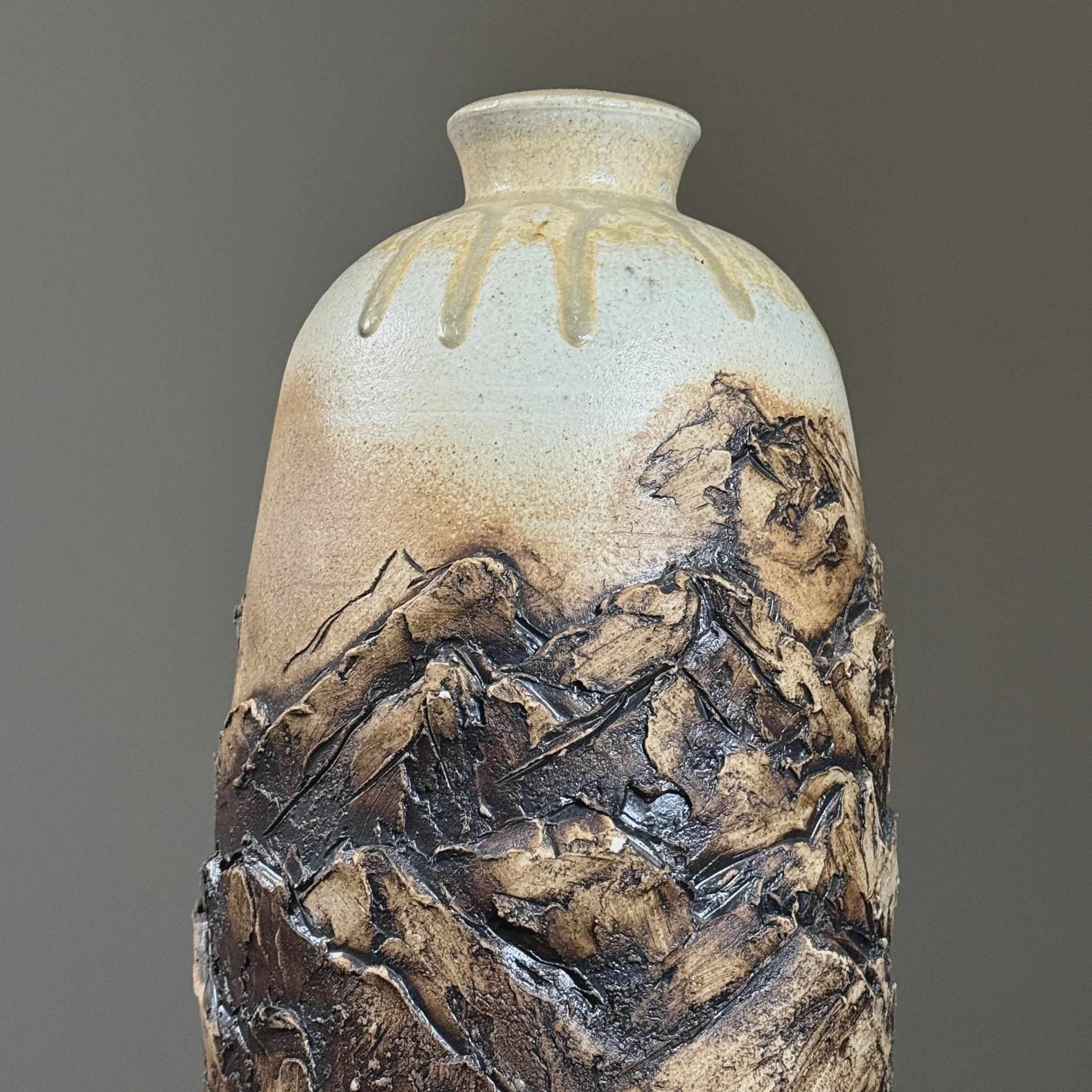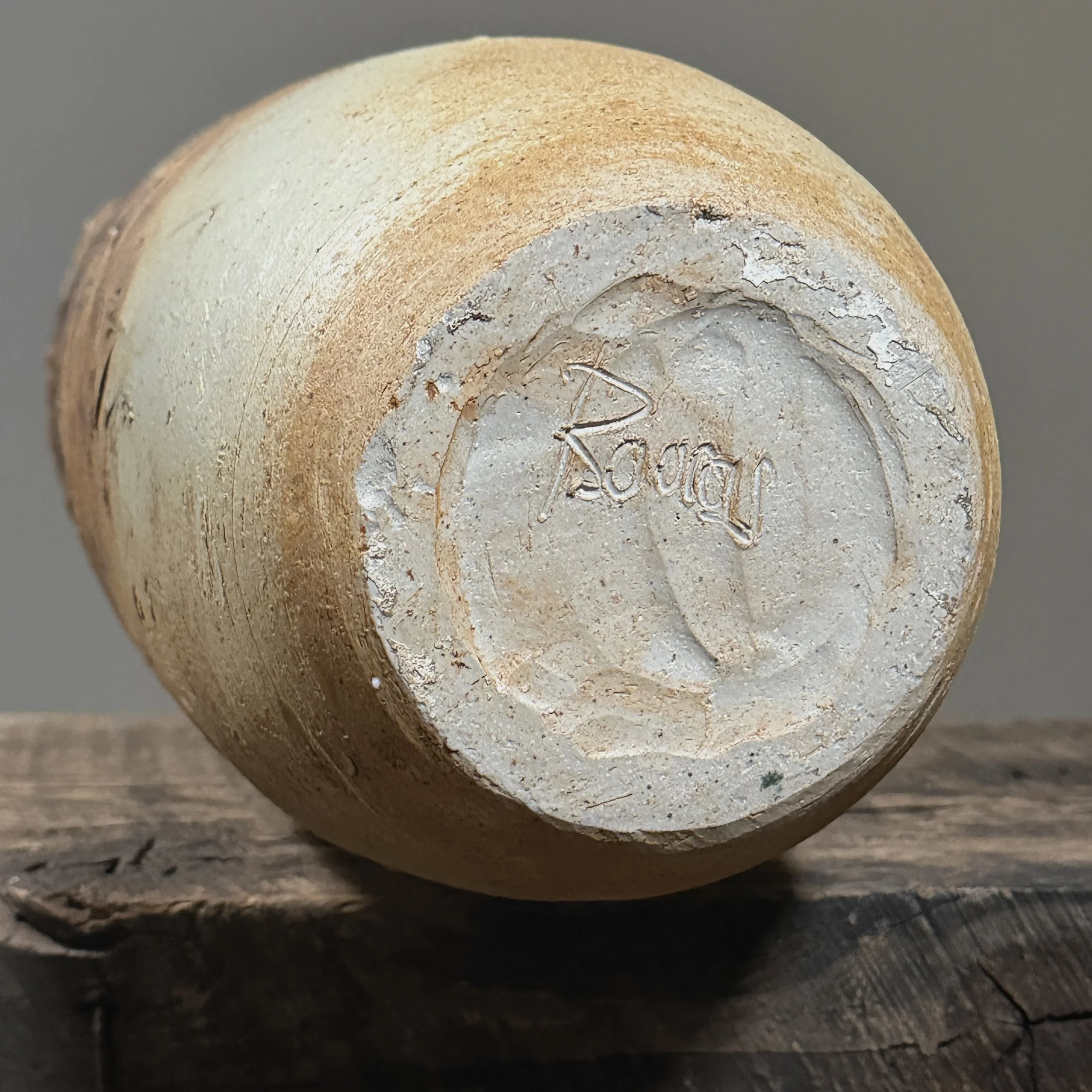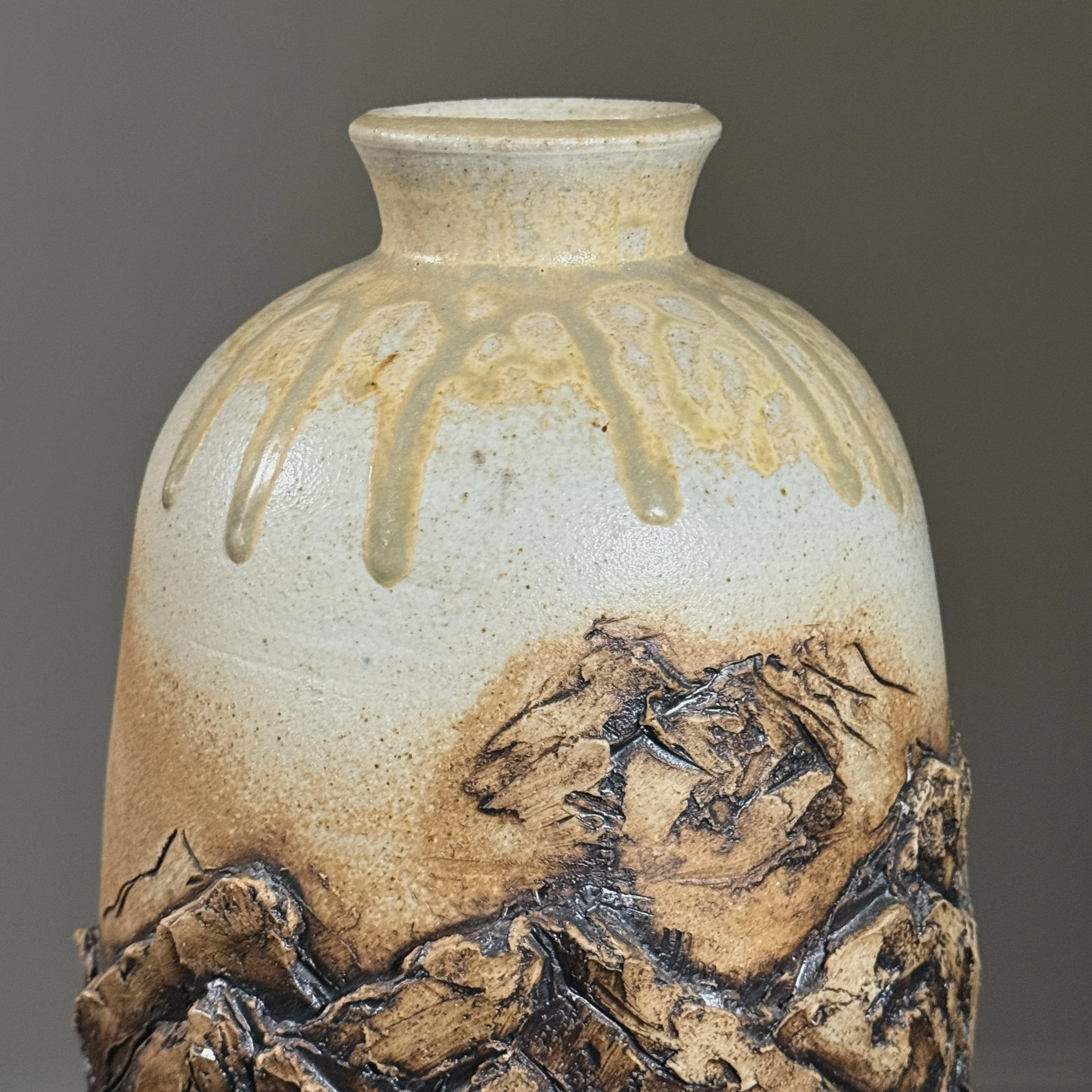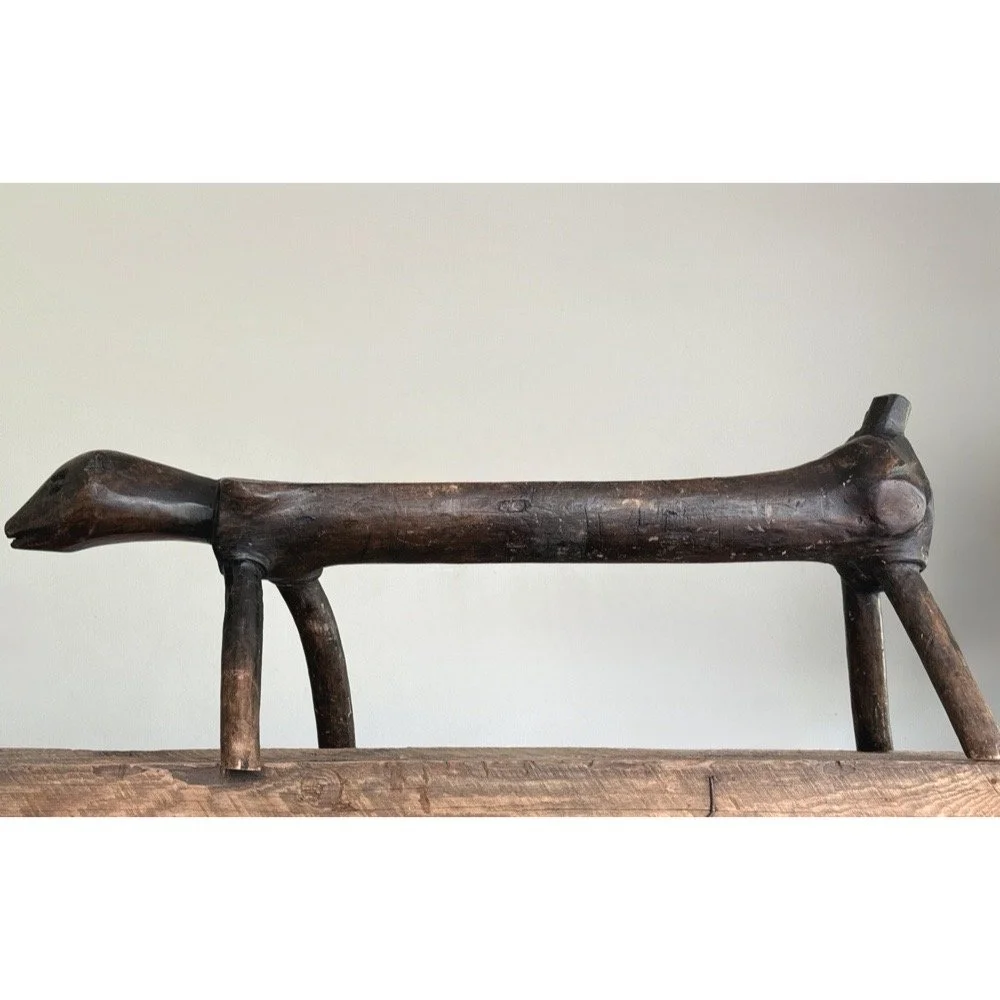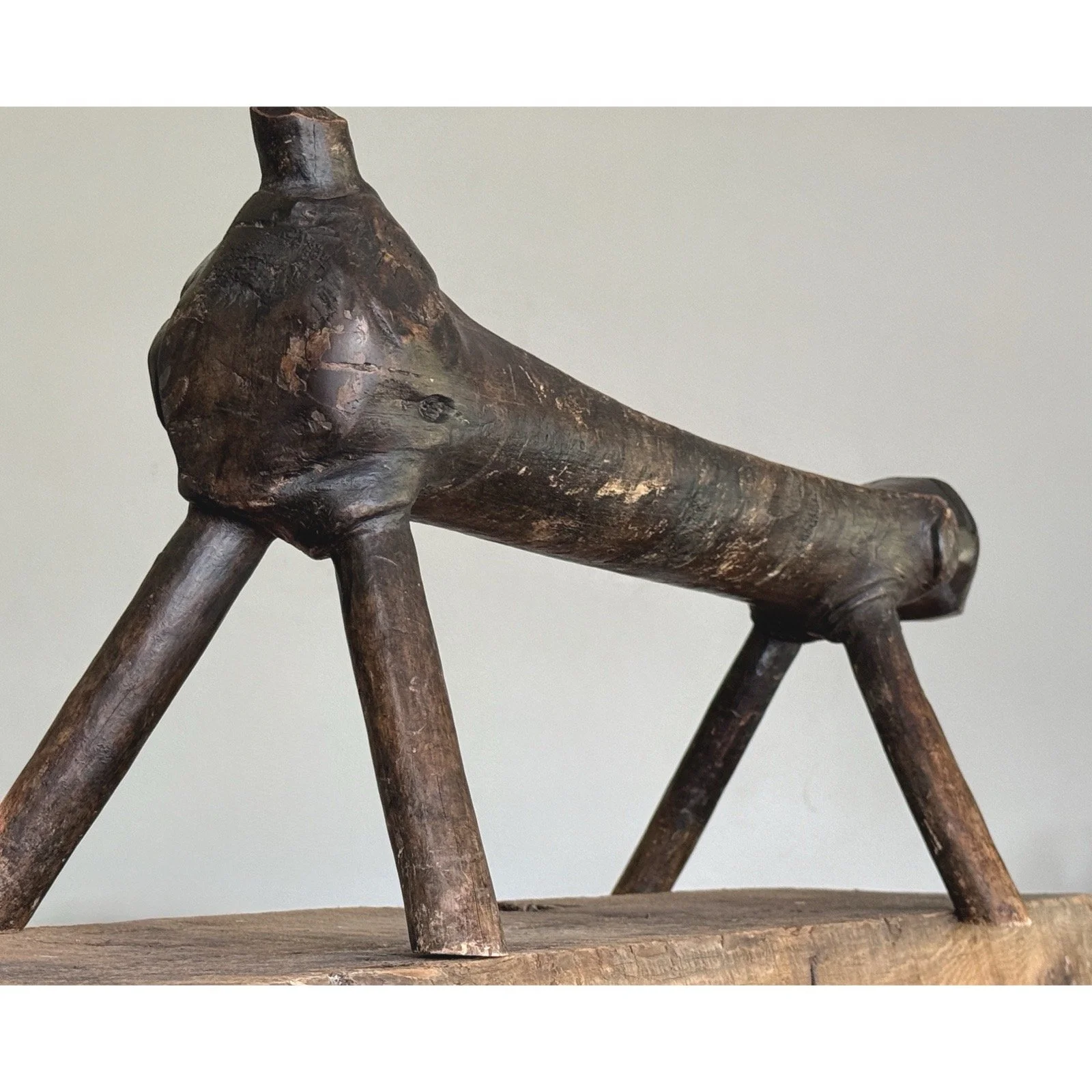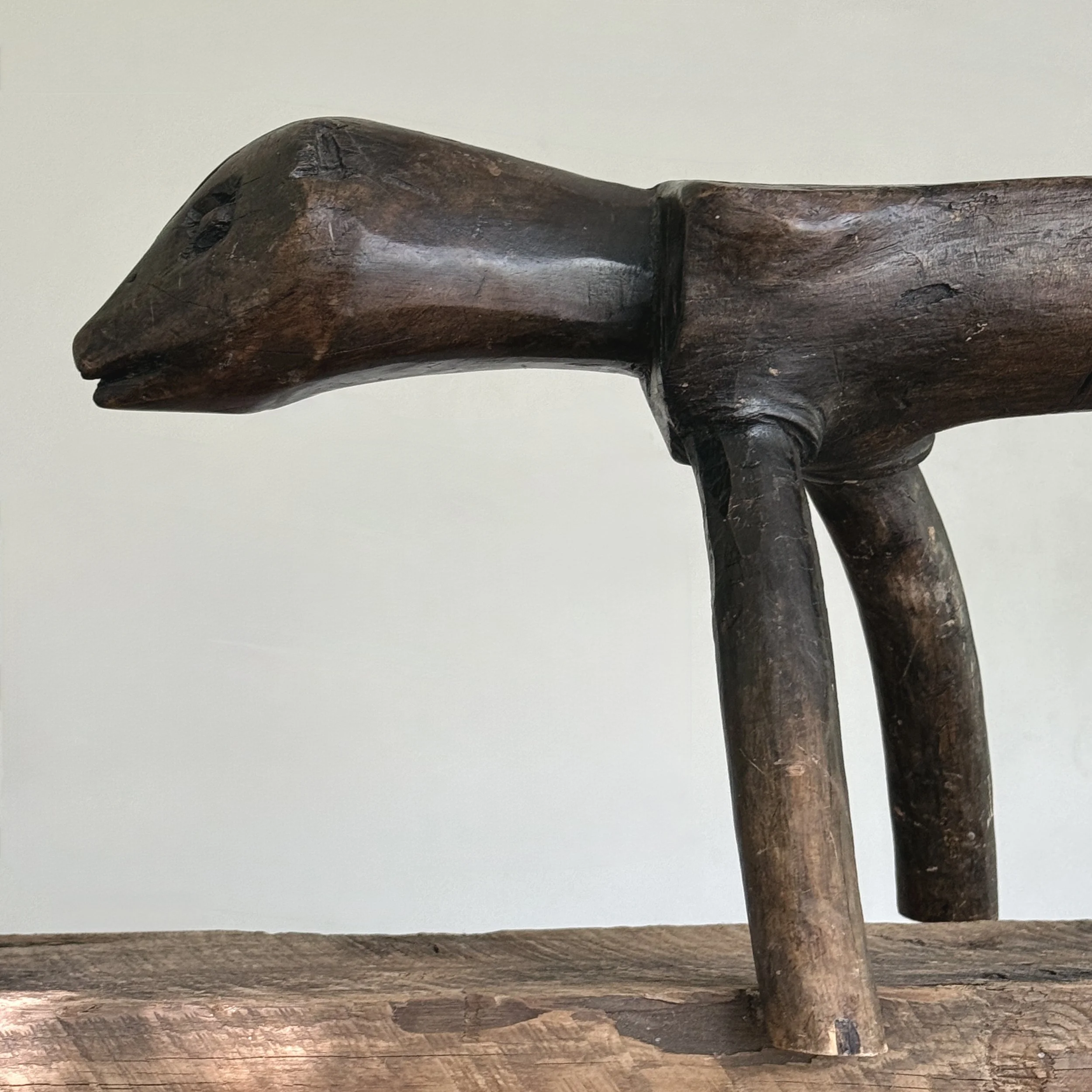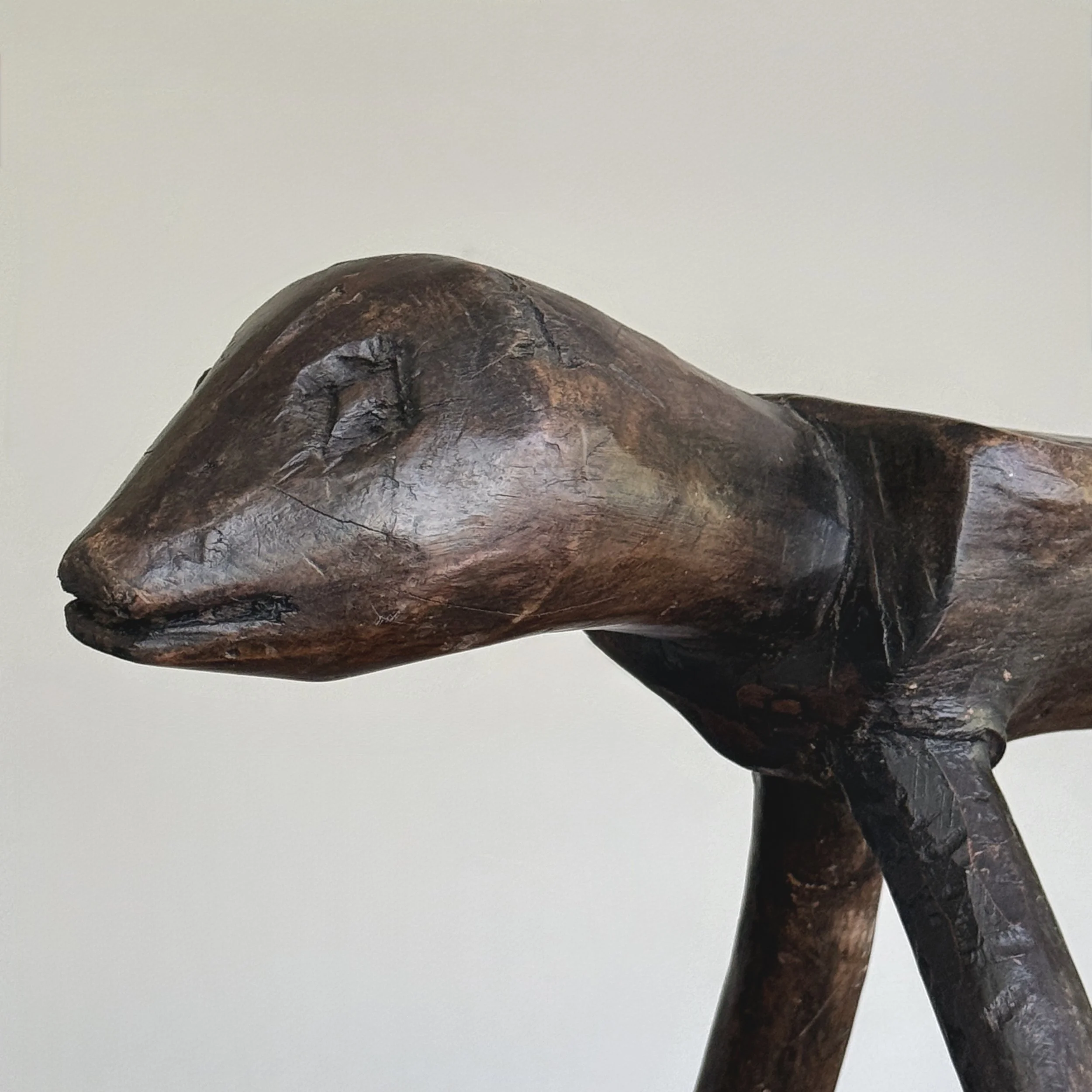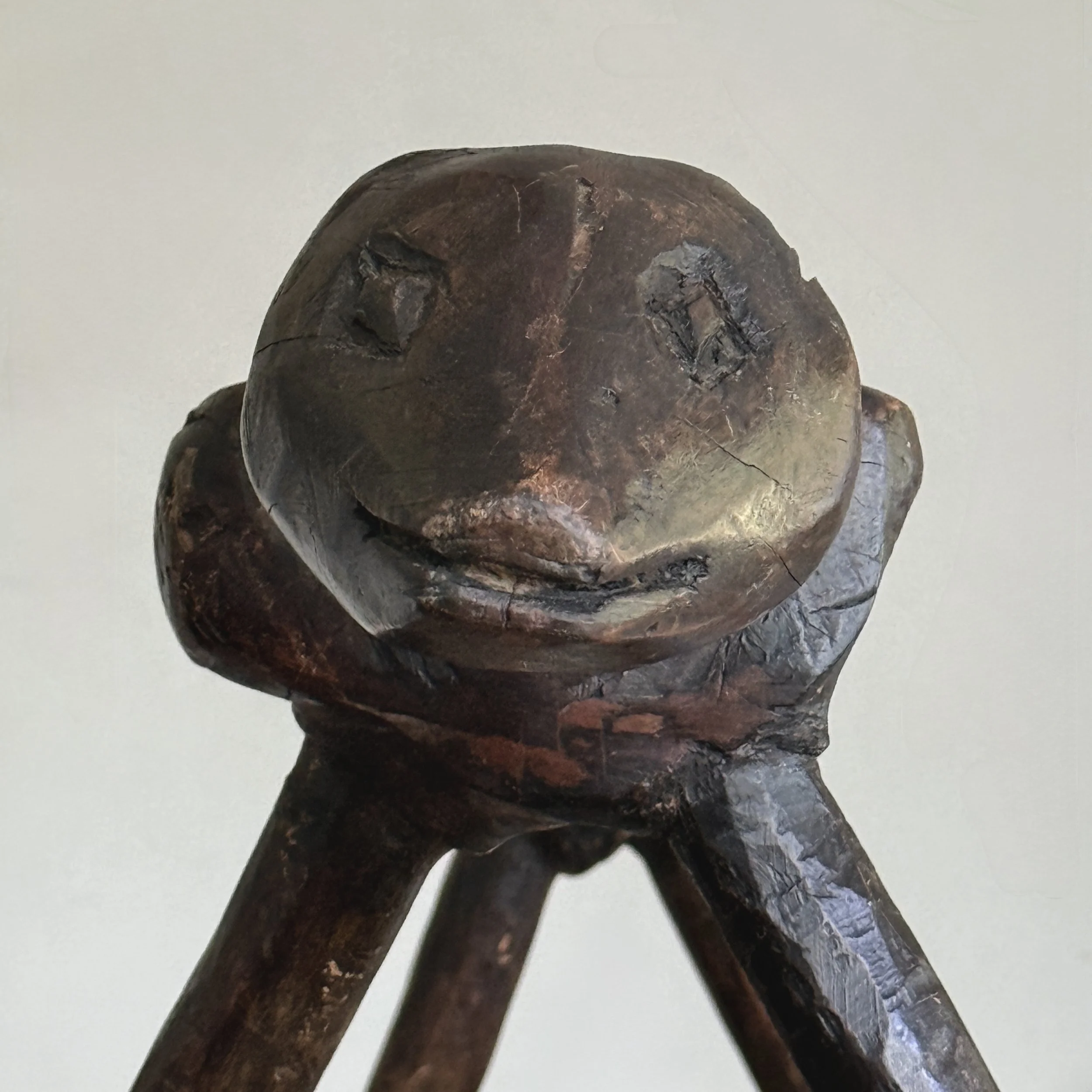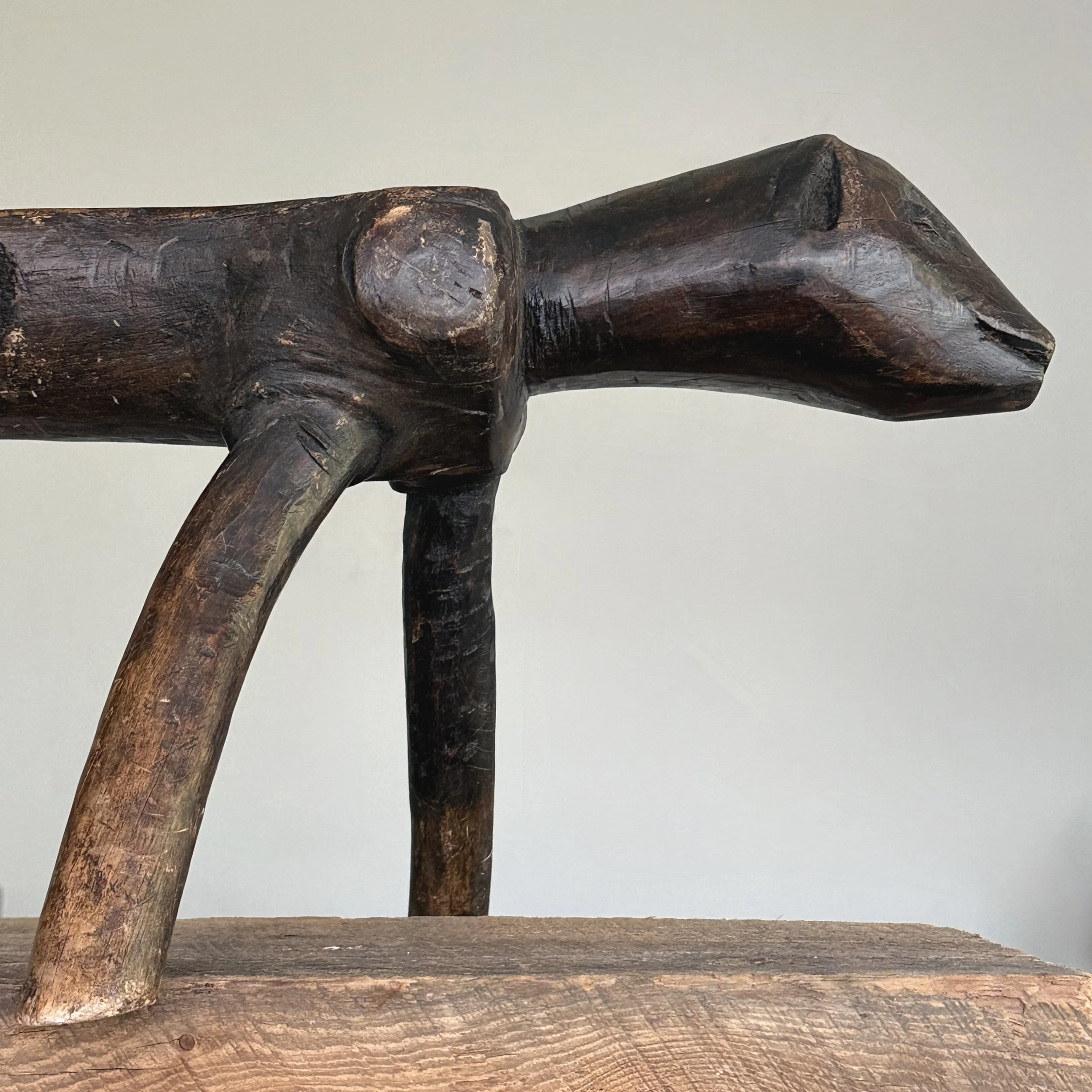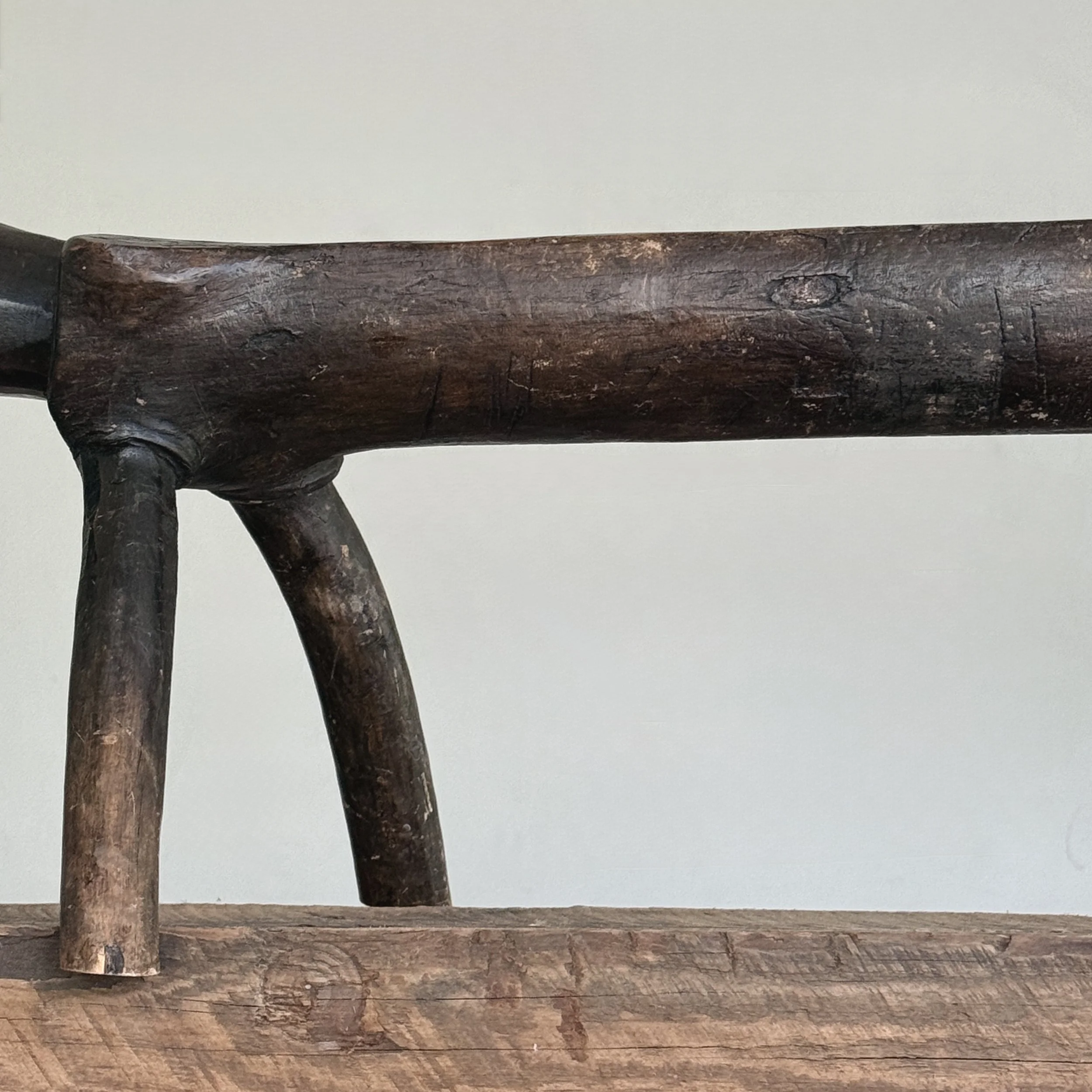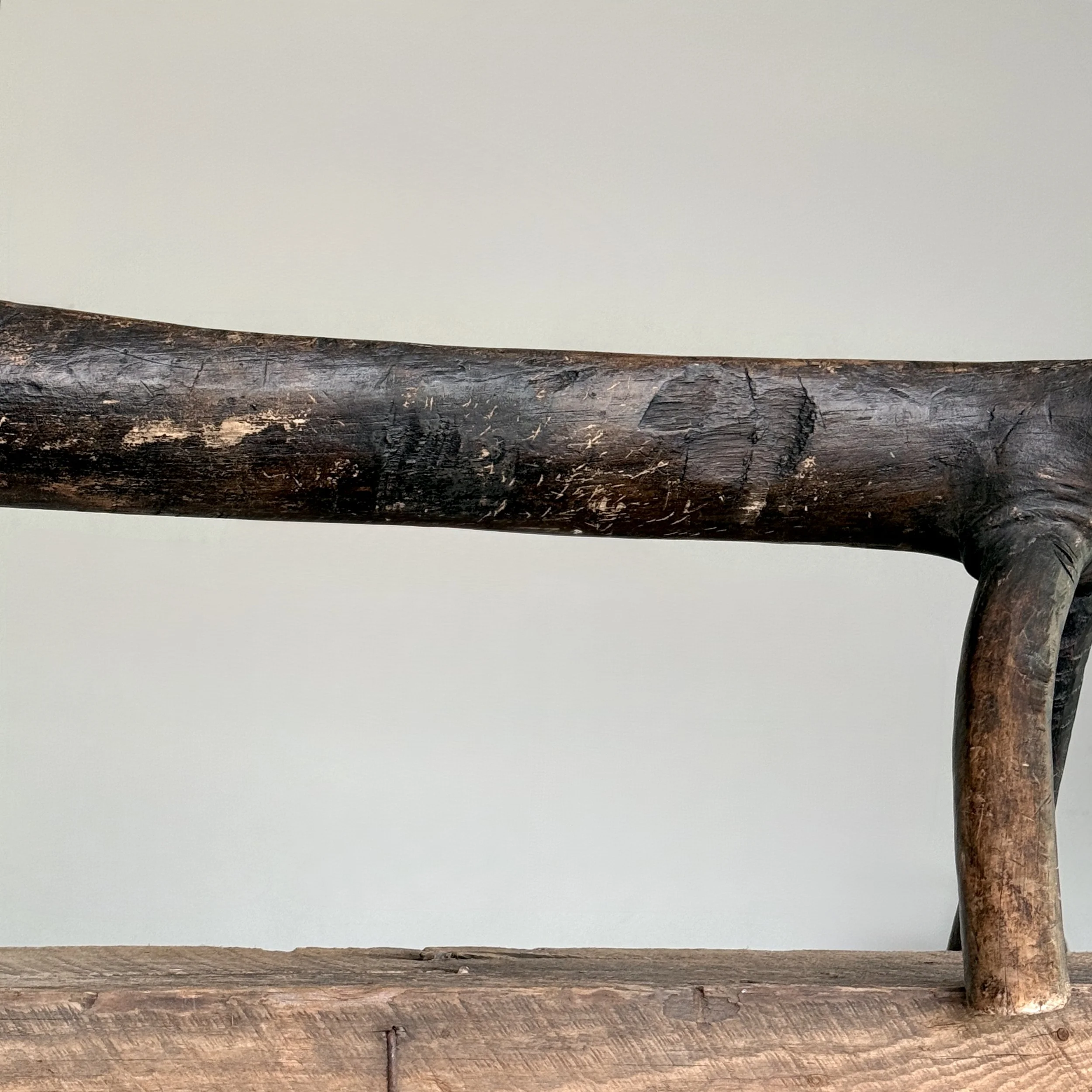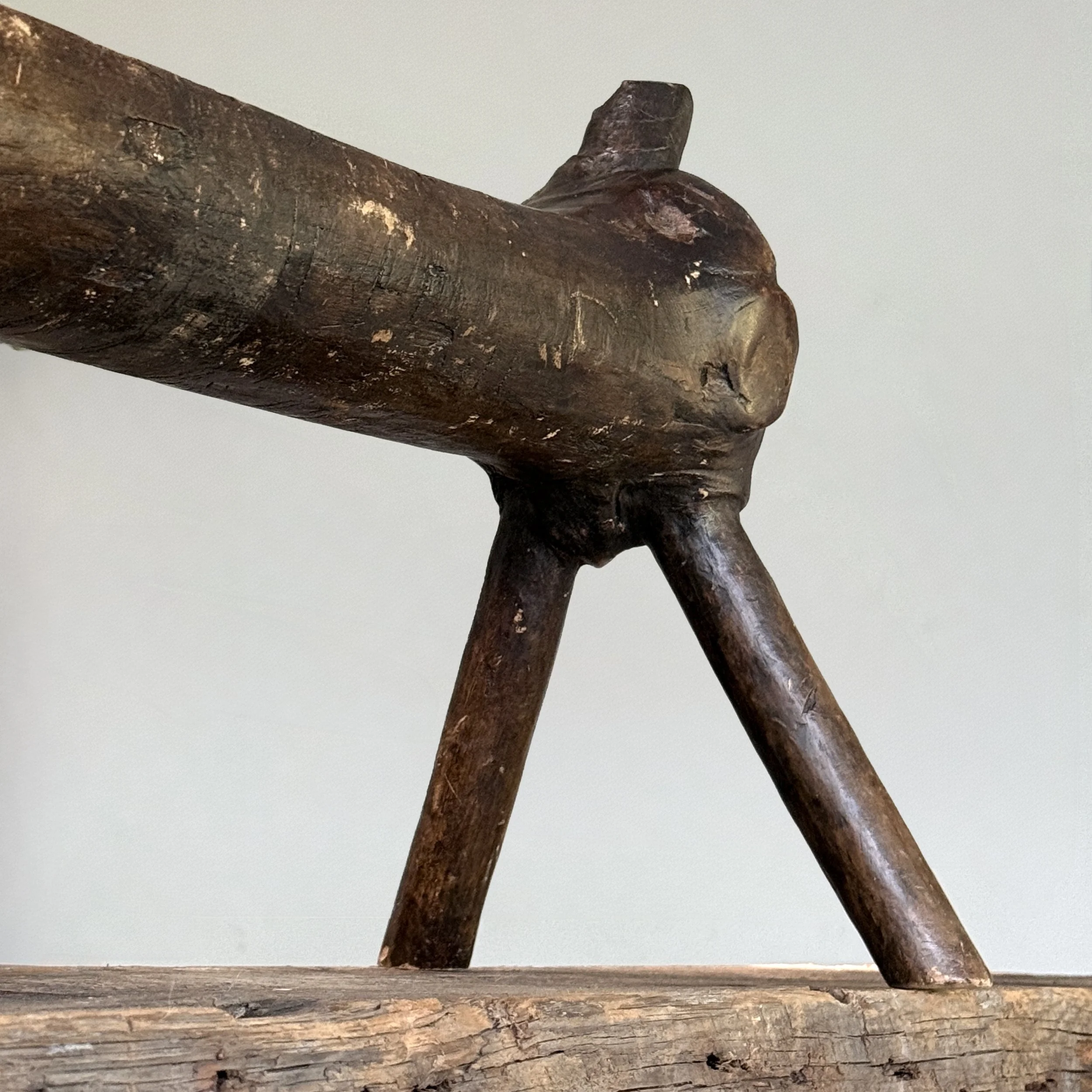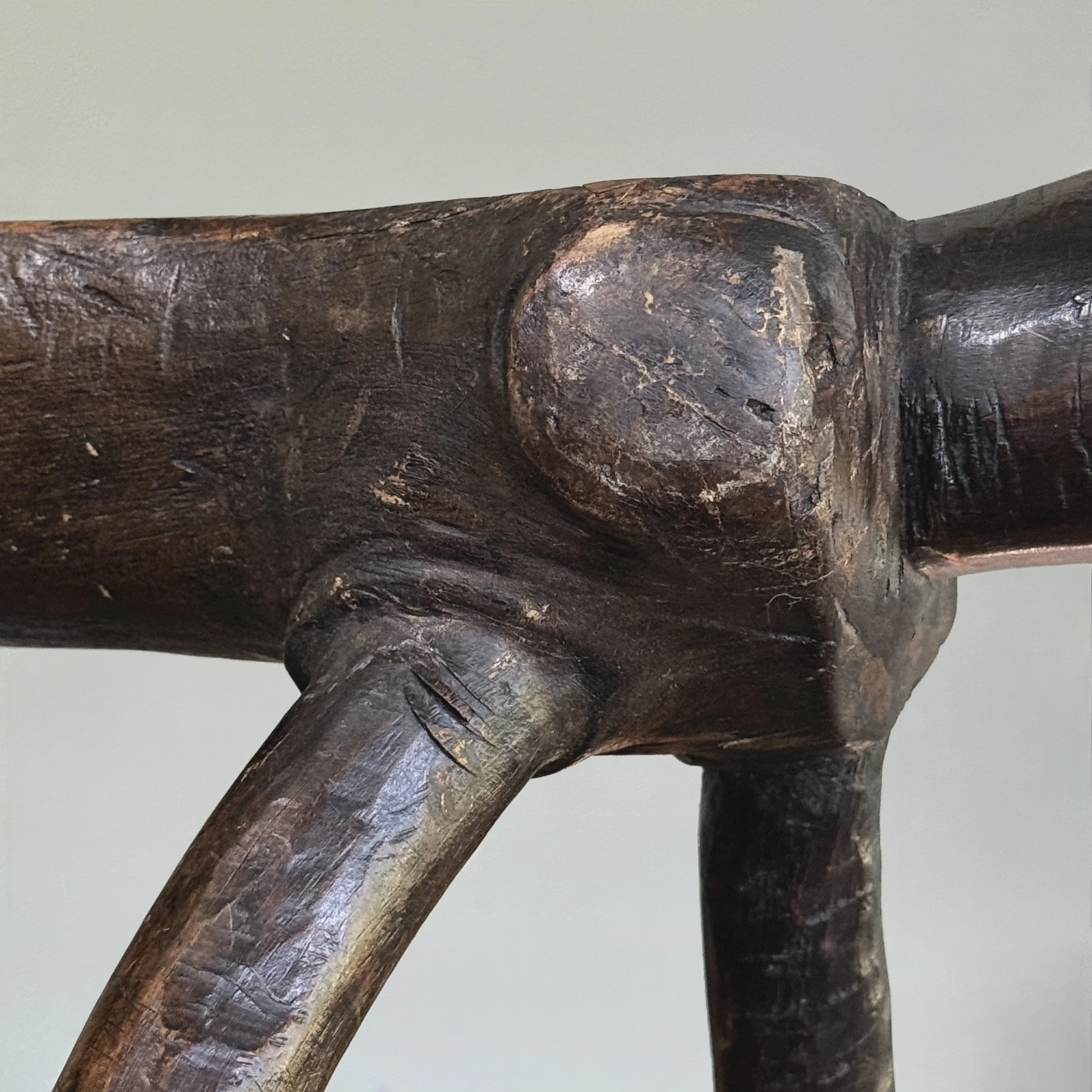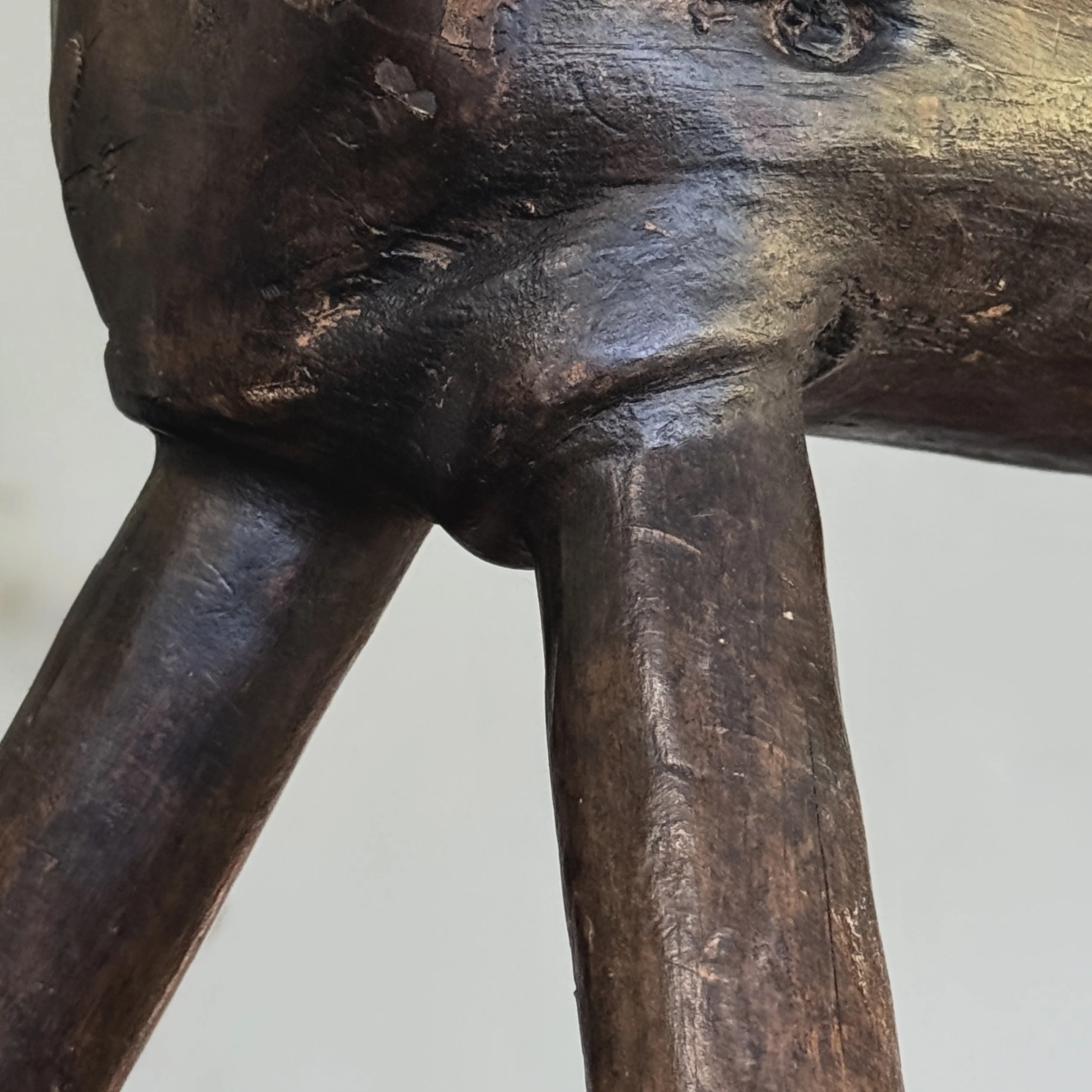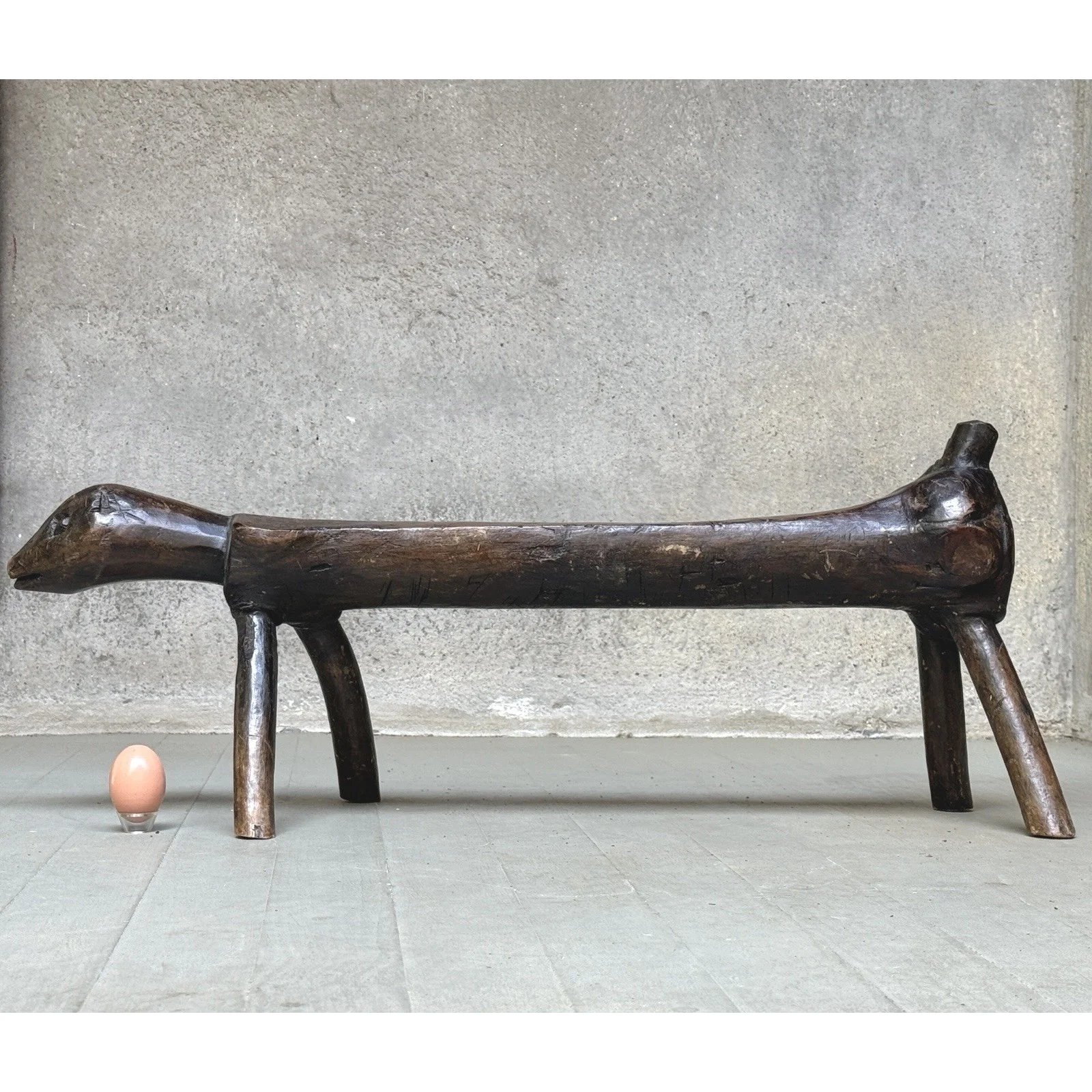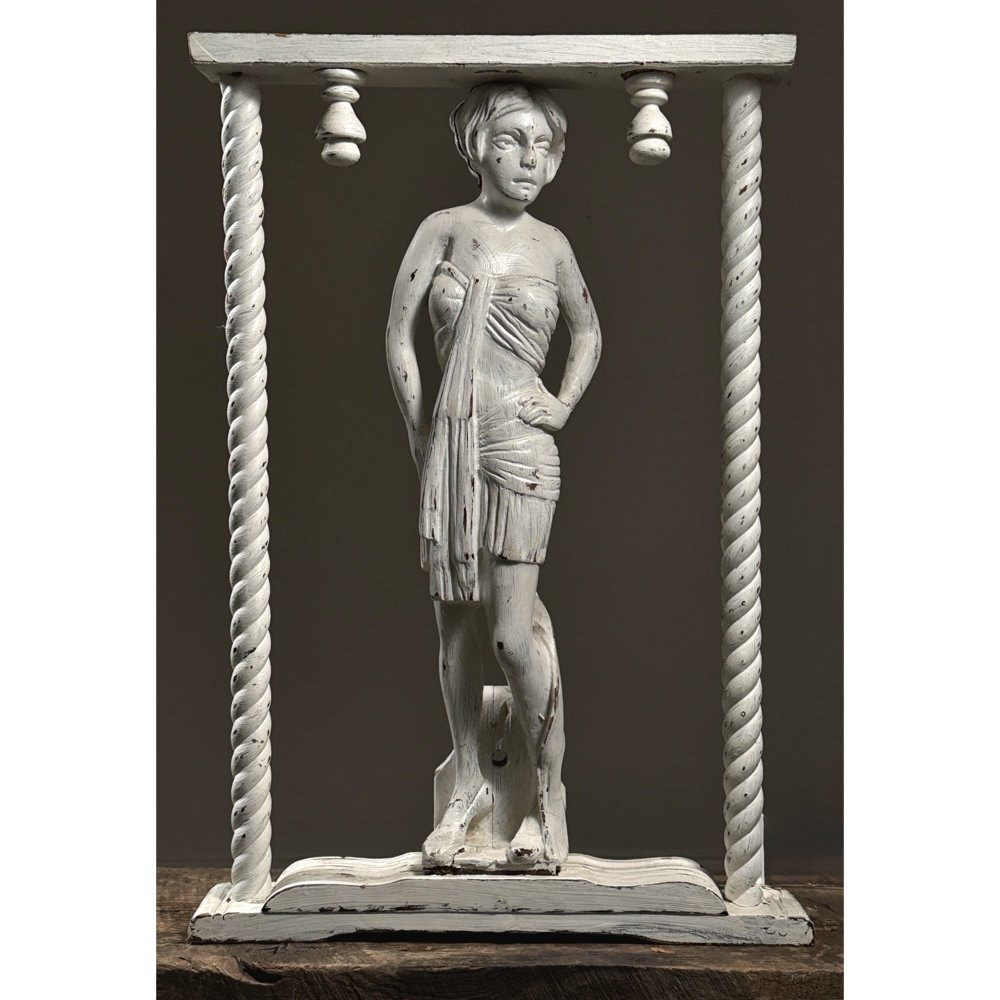 Image 1 of 9
Image 1 of 9

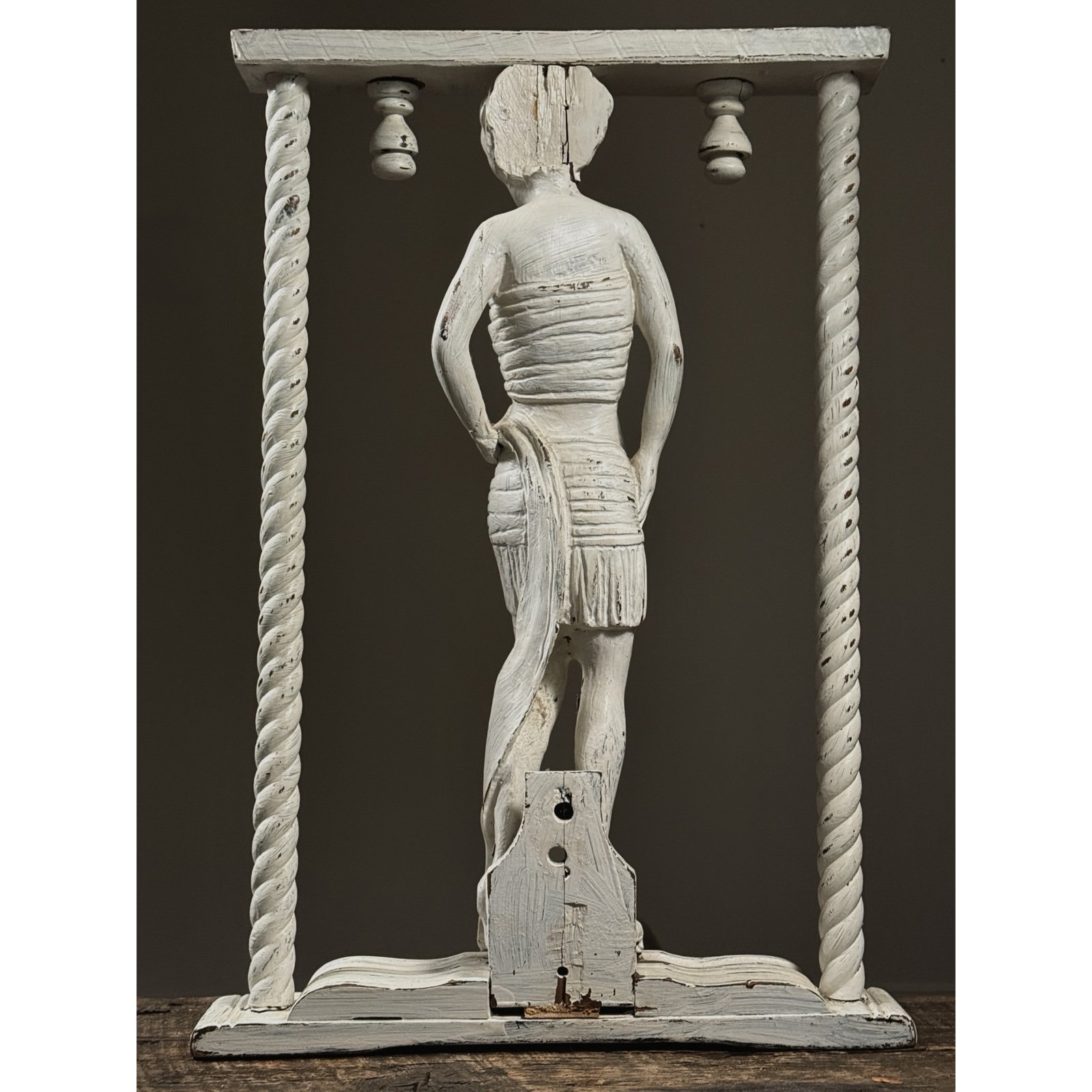 Image 2 of 9
Image 2 of 9

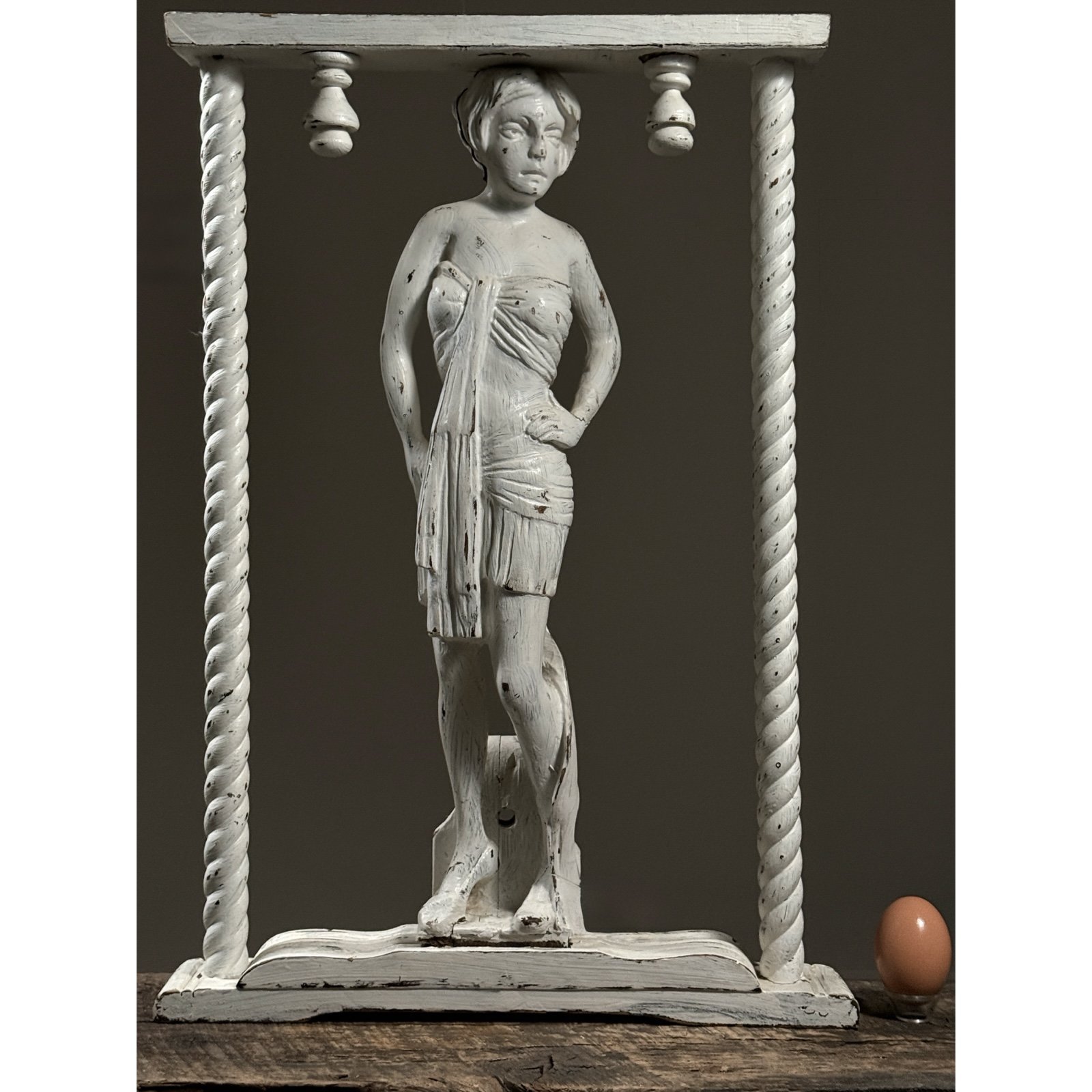 Image 3 of 9
Image 3 of 9

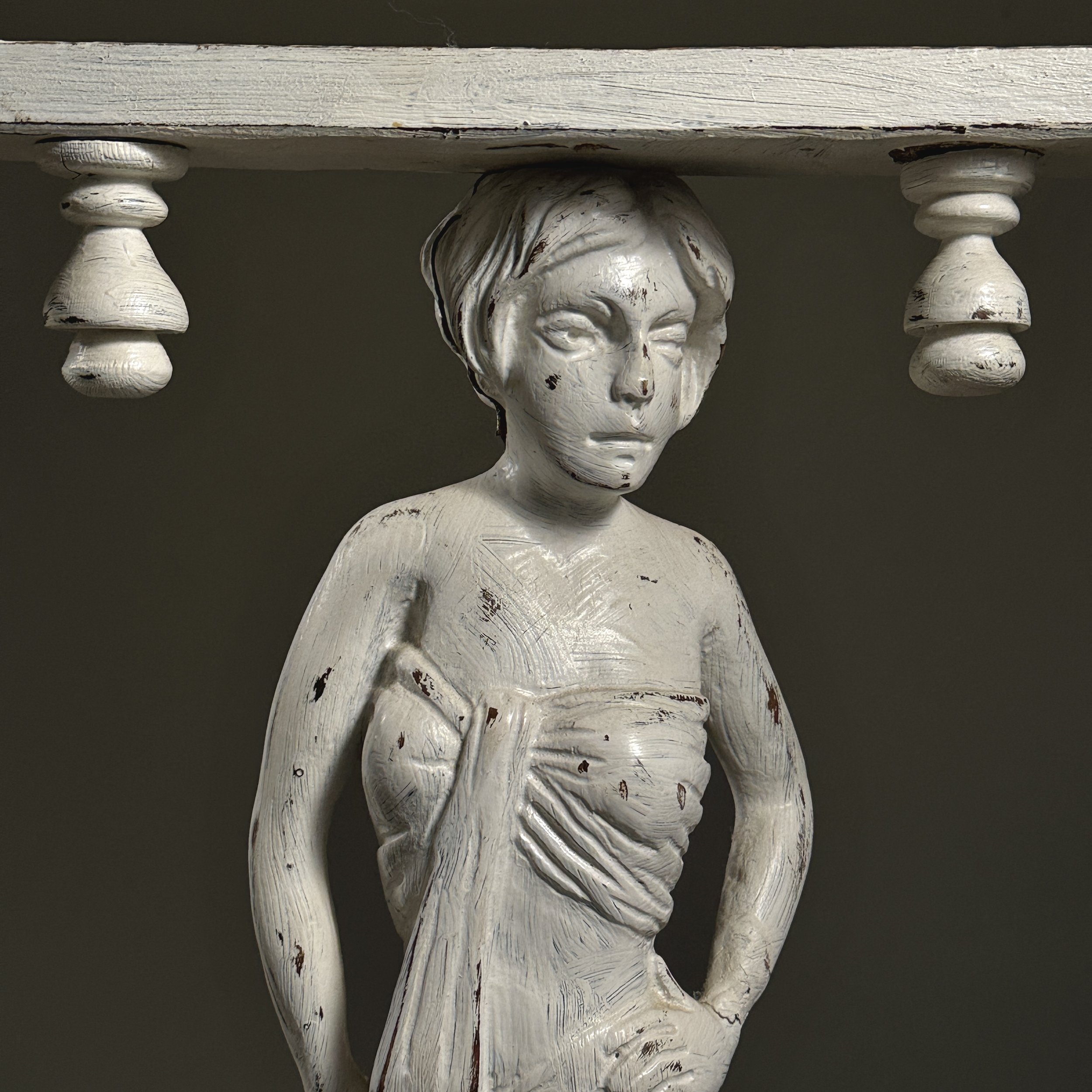 Image 4 of 9
Image 4 of 9

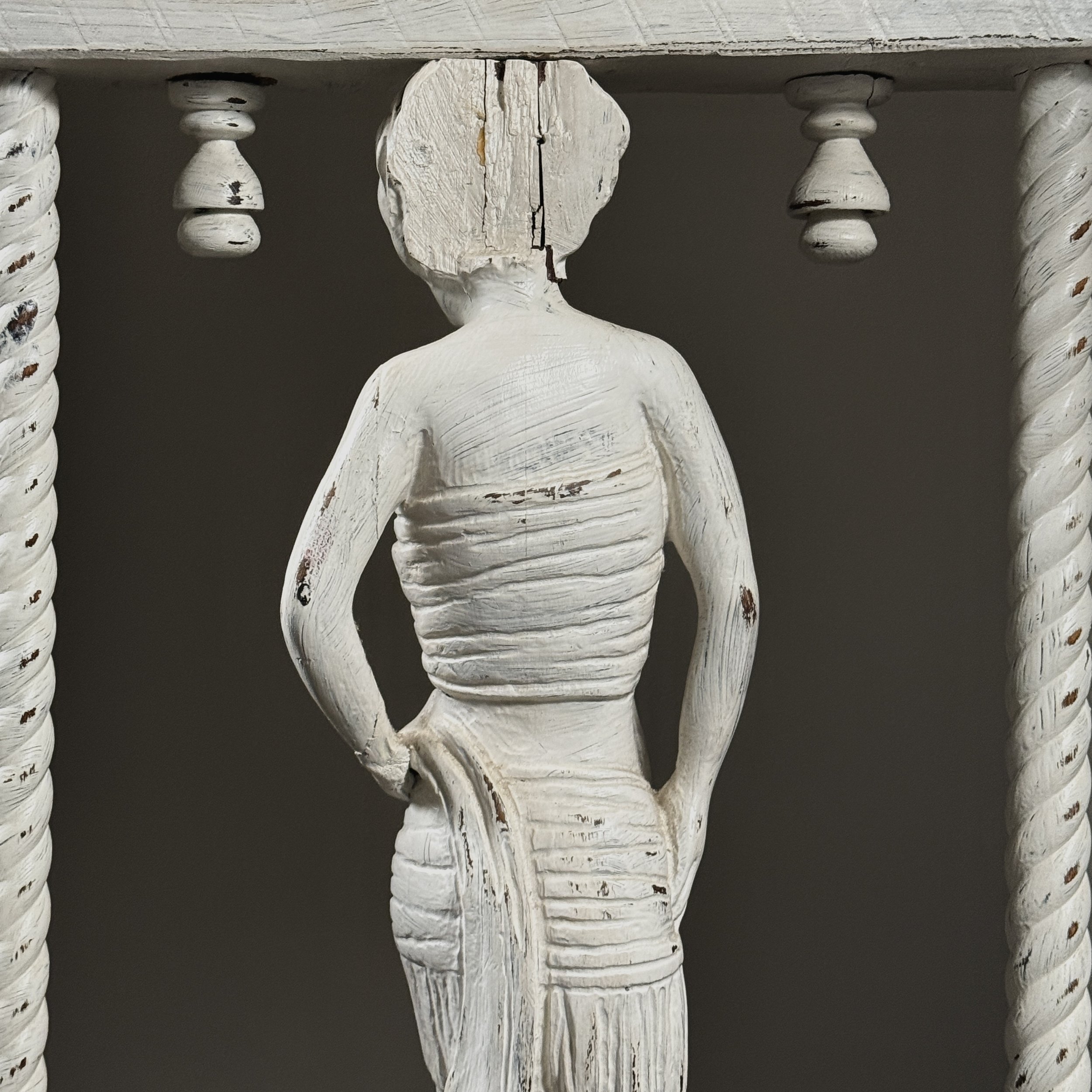 Image 5 of 9
Image 5 of 9

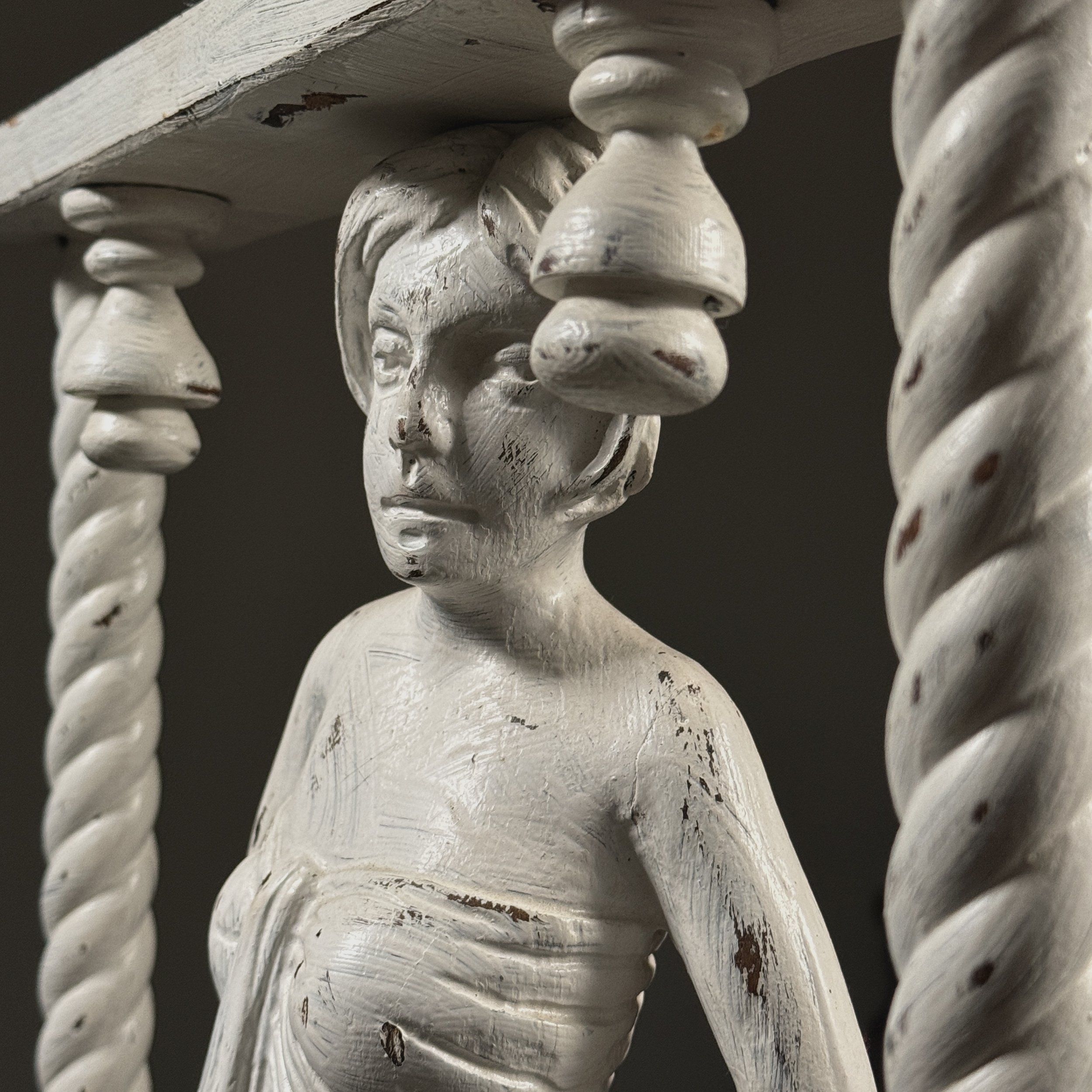 Image 6 of 9
Image 6 of 9

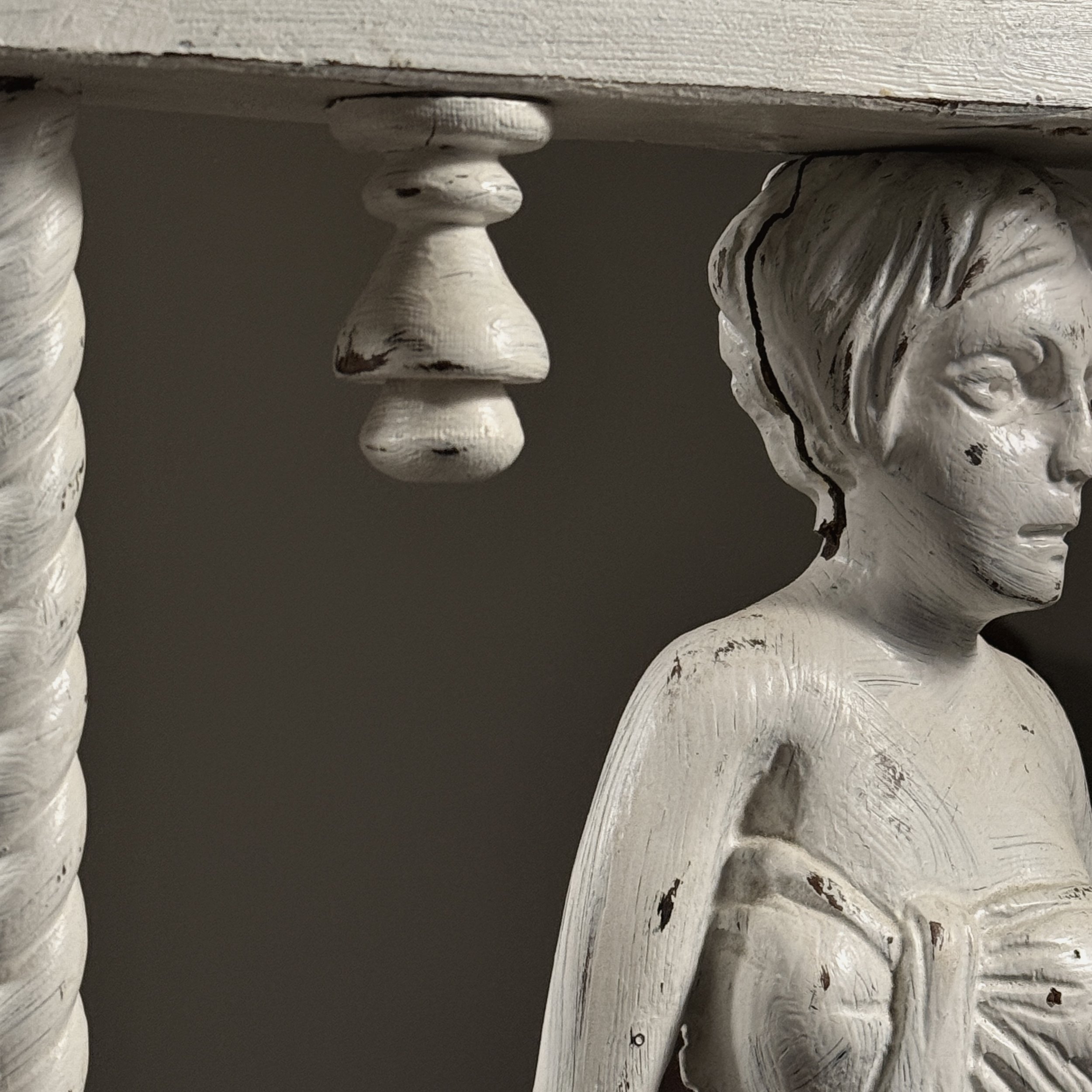 Image 7 of 9
Image 7 of 9

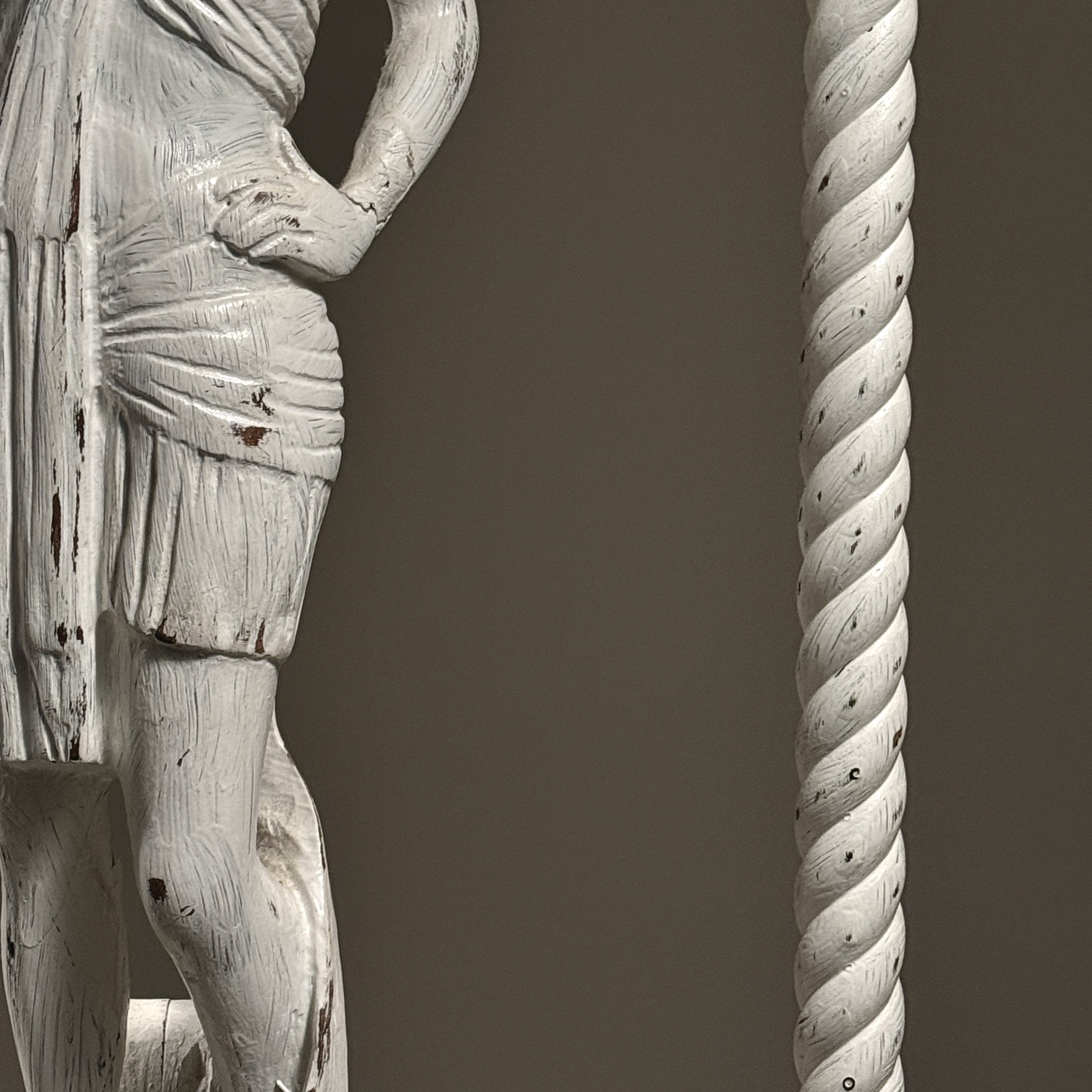 Image 8 of 9
Image 8 of 9

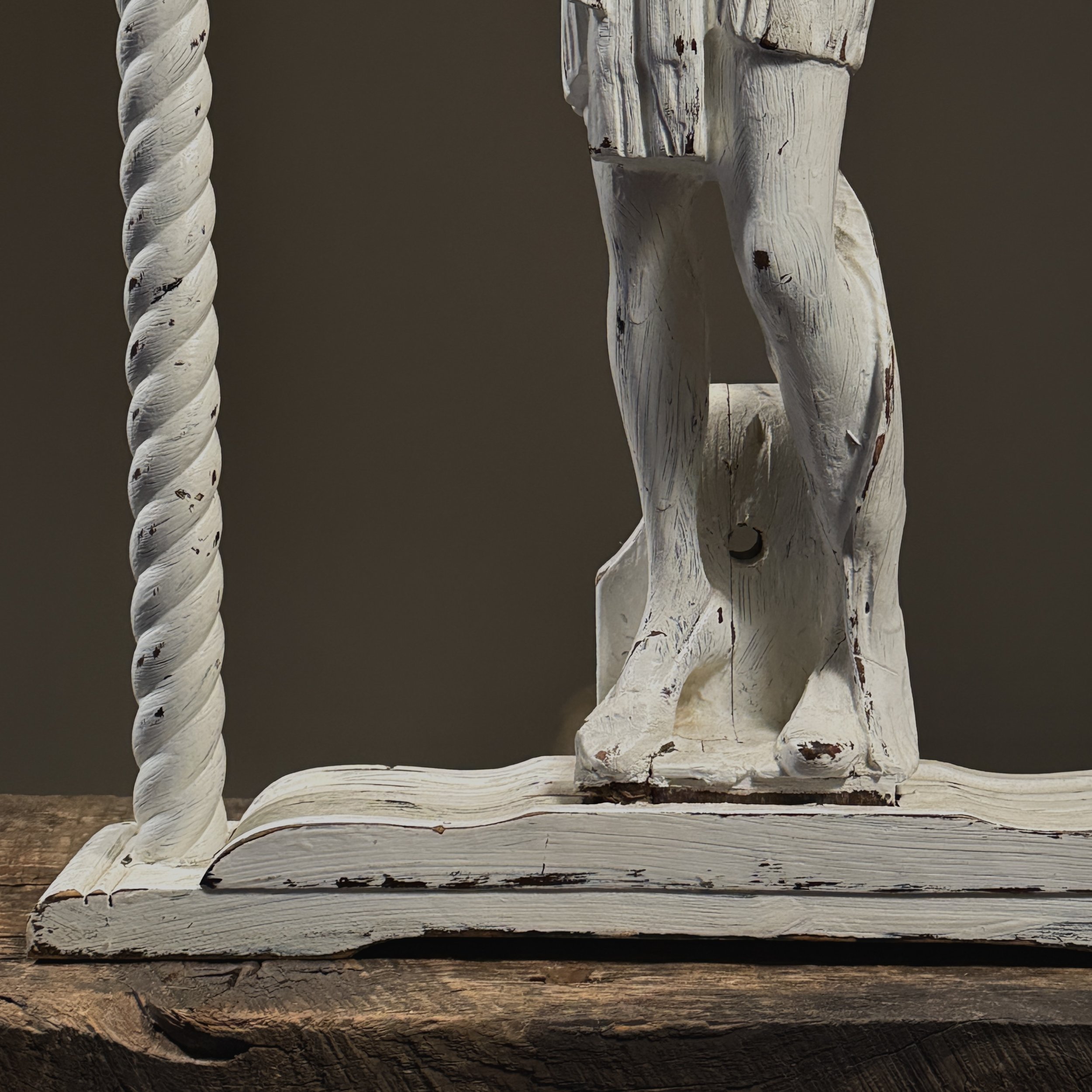 Image 9 of 9
Image 9 of 9










Antique Folk Art Hand Carved Painted Figurative Remnant
Folk Art Hand-Carved and Painted Figurative Sculptural Fragment
Description:
This striking folk art carving depicts a stylized female figure, likely a fragment from a larger architectural or decorative structure. The flat reverse suggests it originally served as an applied ornament—possibly a *faccia* (decorative face) or panel affixed to furniture, a larger sculpture, or a building element. Rendered in robust strokes, the piece exemplifies traditional hand-carving techniques, with remnants of original paint adding depth to its weathered surface.
Features & Condition:
-Material: Carved wood, with traces of polychrome pigment
-Construction: Flat-backed, indicating prior attachment; stable when displayed upright (minor wobble) or hung
-Surface: Age-appropriate wear, including fine cracks, shallow splits, and scattered scratches
-Dimensions: 22.75”H x 16”W x 2.75”D
Historical Context:
Such fragments were common in vernacular European and American folk art, where carved figures adorned homes, shops, and communal spaces. The bold, simplified features align with rural carving traditions, often blending practical function with symbolic or devotional purpose. The woman’s pose and attire may offer clues to regional origins or intended meaning—whether secular or commemorative.
Provenance:
Private collection; acquired in the United States. Further research may reveal regional attribution.
Conservation Notes:
Stable for display as a freestanding sculptural piece or wall-mounted artwork. It is a bit wobbly so a stand or backing would be ideal. Surface fragility advises minimal handling.
Curatorial Remarks:
A compelling example of adaptive folk artistry, this fragment invites speculation about its original context while standing as an evocative standalone artifact.
Folk Art Hand-Carved and Painted Figurative Sculptural Fragment
Description:
This striking folk art carving depicts a stylized female figure, likely a fragment from a larger architectural or decorative structure. The flat reverse suggests it originally served as an applied ornament—possibly a *faccia* (decorative face) or panel affixed to furniture, a larger sculpture, or a building element. Rendered in robust strokes, the piece exemplifies traditional hand-carving techniques, with remnants of original paint adding depth to its weathered surface.
Features & Condition:
-Material: Carved wood, with traces of polychrome pigment
-Construction: Flat-backed, indicating prior attachment; stable when displayed upright (minor wobble) or hung
-Surface: Age-appropriate wear, including fine cracks, shallow splits, and scattered scratches
-Dimensions: 22.75”H x 16”W x 2.75”D
Historical Context:
Such fragments were common in vernacular European and American folk art, where carved figures adorned homes, shops, and communal spaces. The bold, simplified features align with rural carving traditions, often blending practical function with symbolic or devotional purpose. The woman’s pose and attire may offer clues to regional origins or intended meaning—whether secular or commemorative.
Provenance:
Private collection; acquired in the United States. Further research may reveal regional attribution.
Conservation Notes:
Stable for display as a freestanding sculptural piece or wall-mounted artwork. It is a bit wobbly so a stand or backing would be ideal. Surface fragility advises minimal handling.
Curatorial Remarks:
A compelling example of adaptive folk artistry, this fragment invites speculation about its original context while standing as an evocative standalone artifact.


